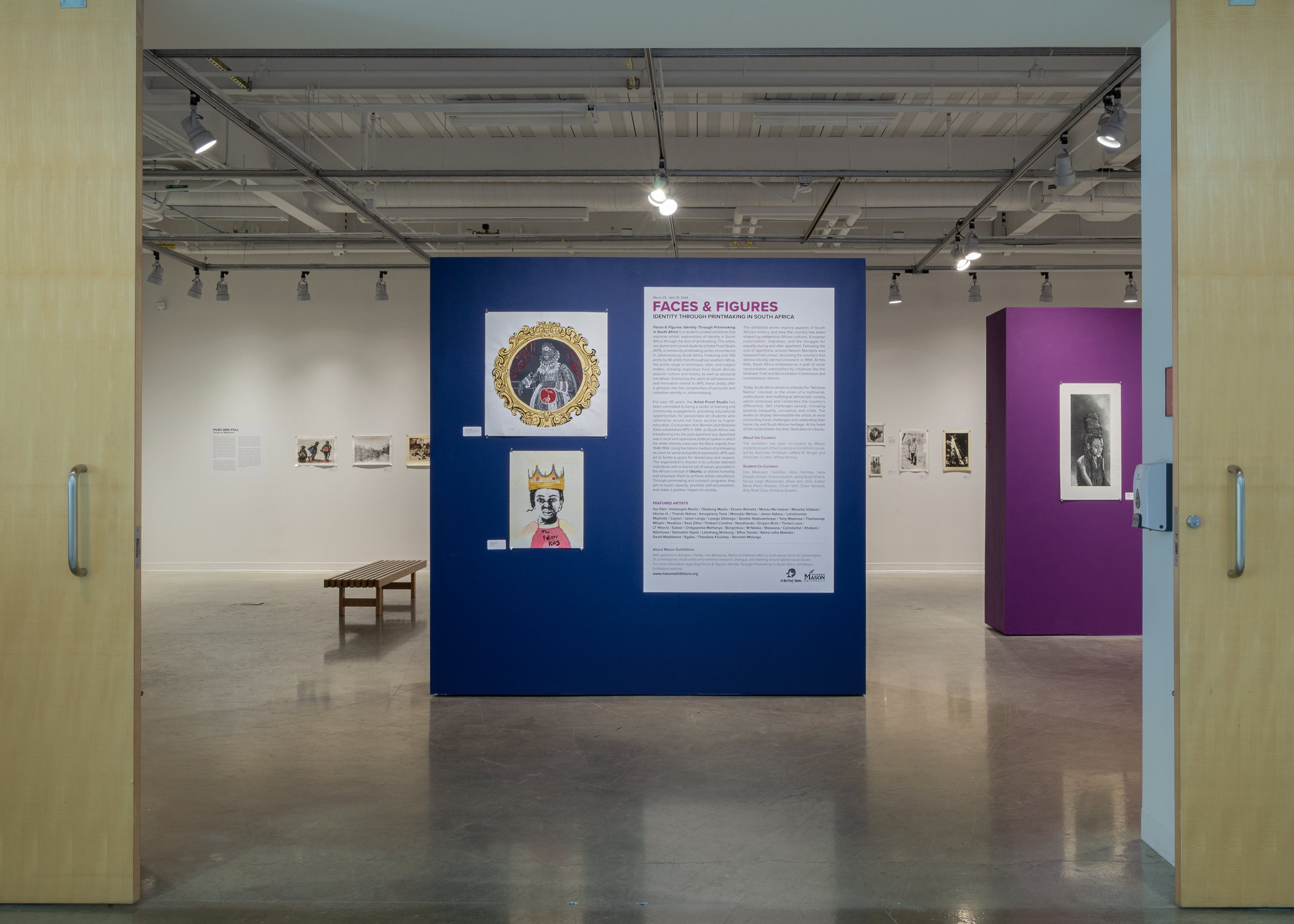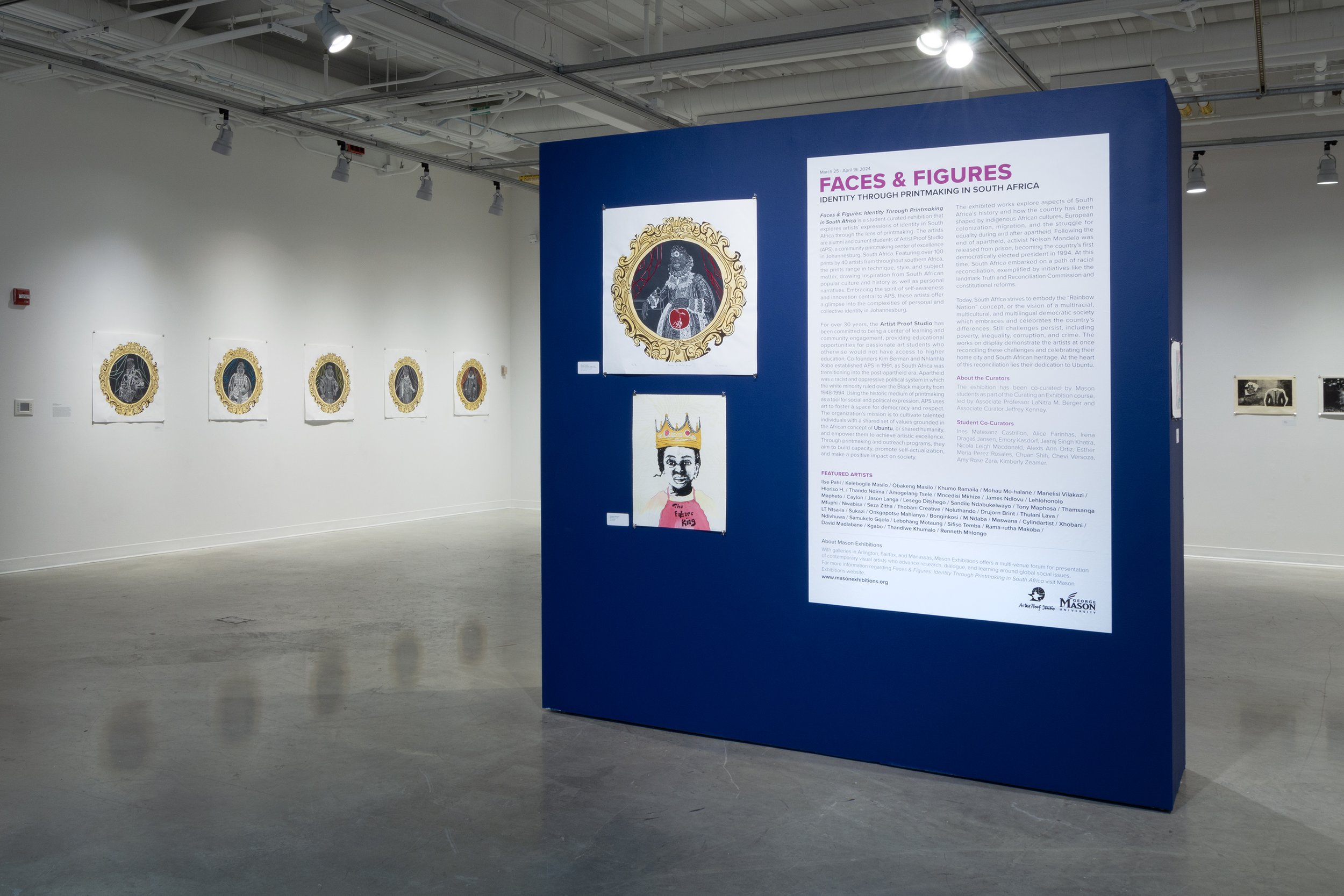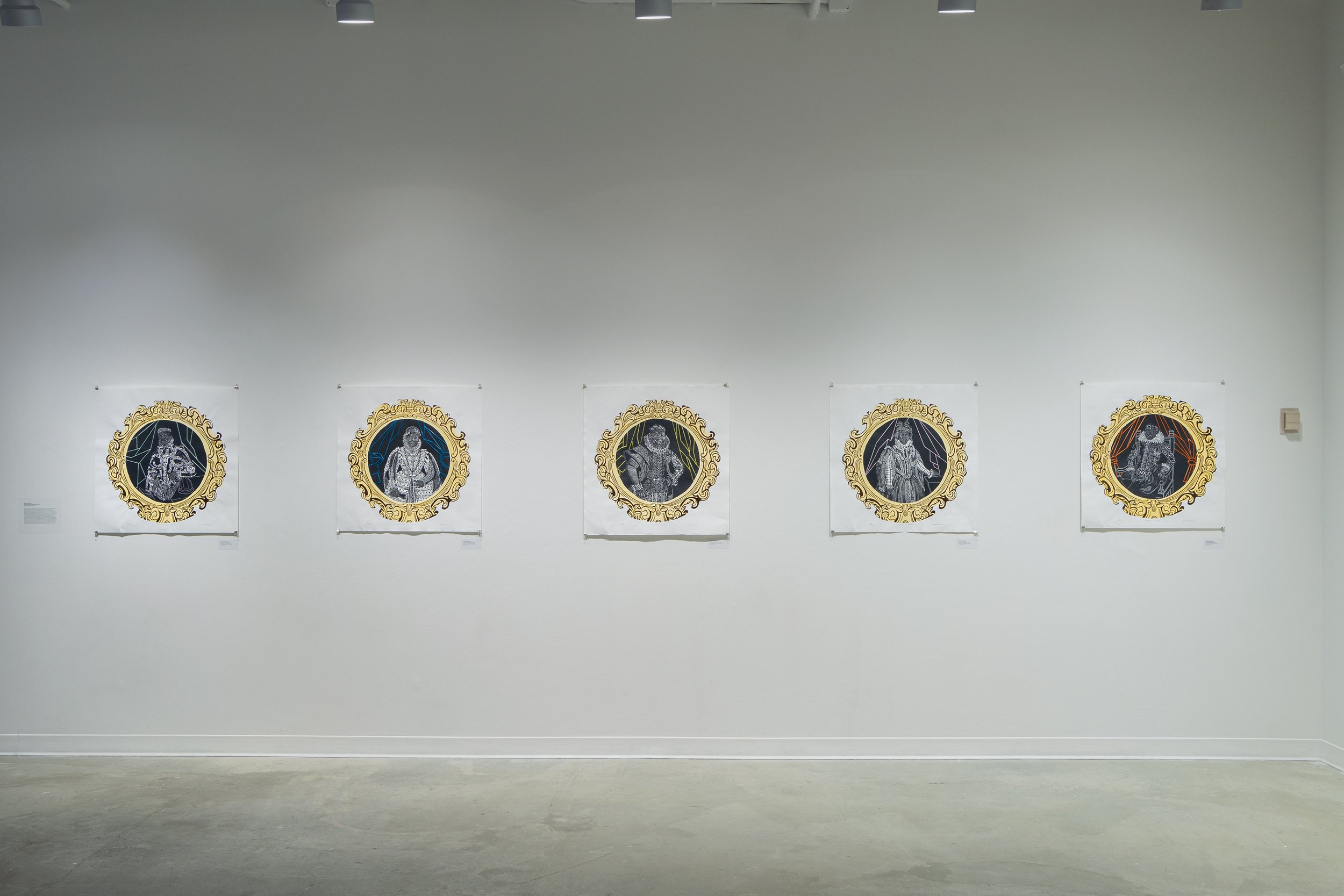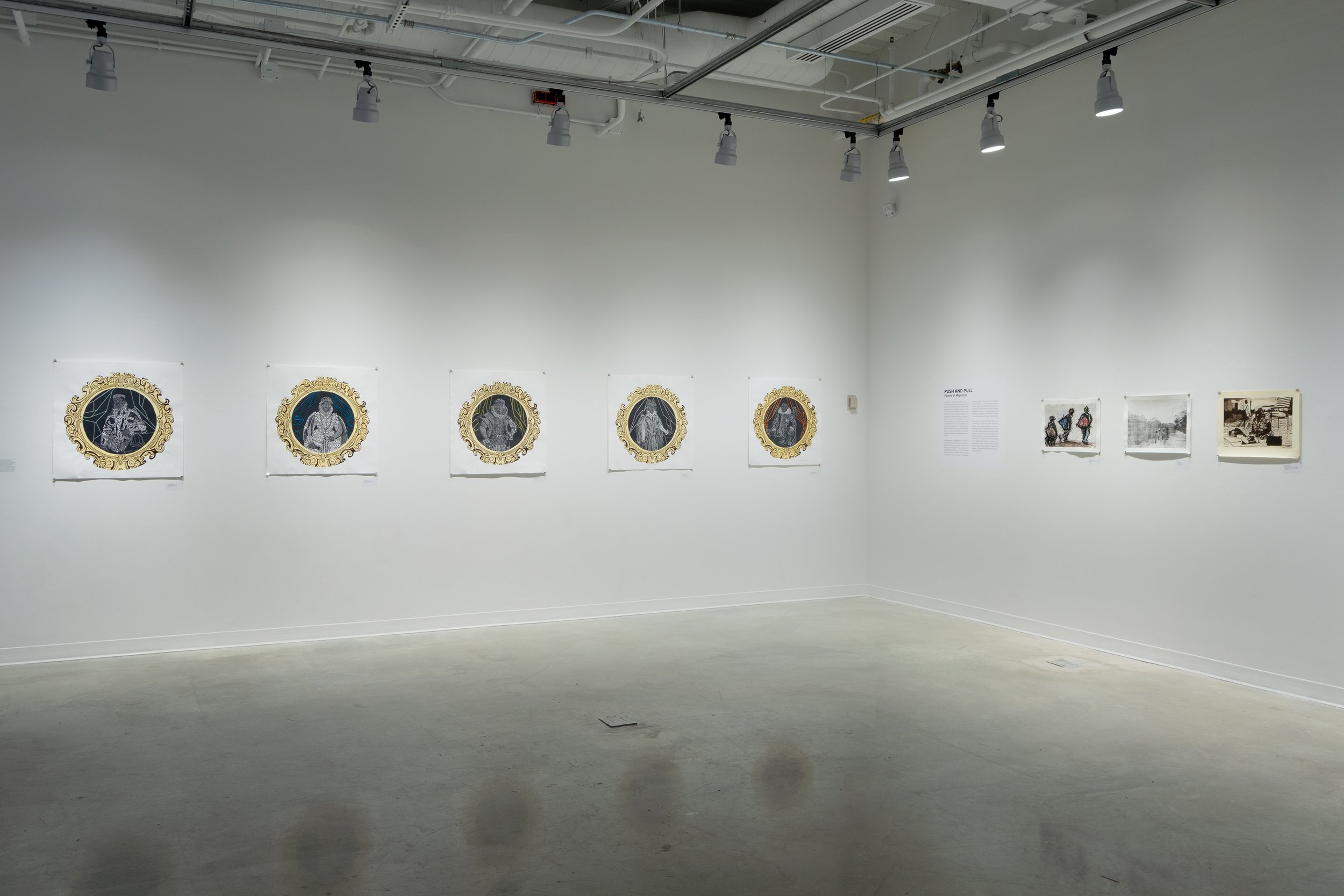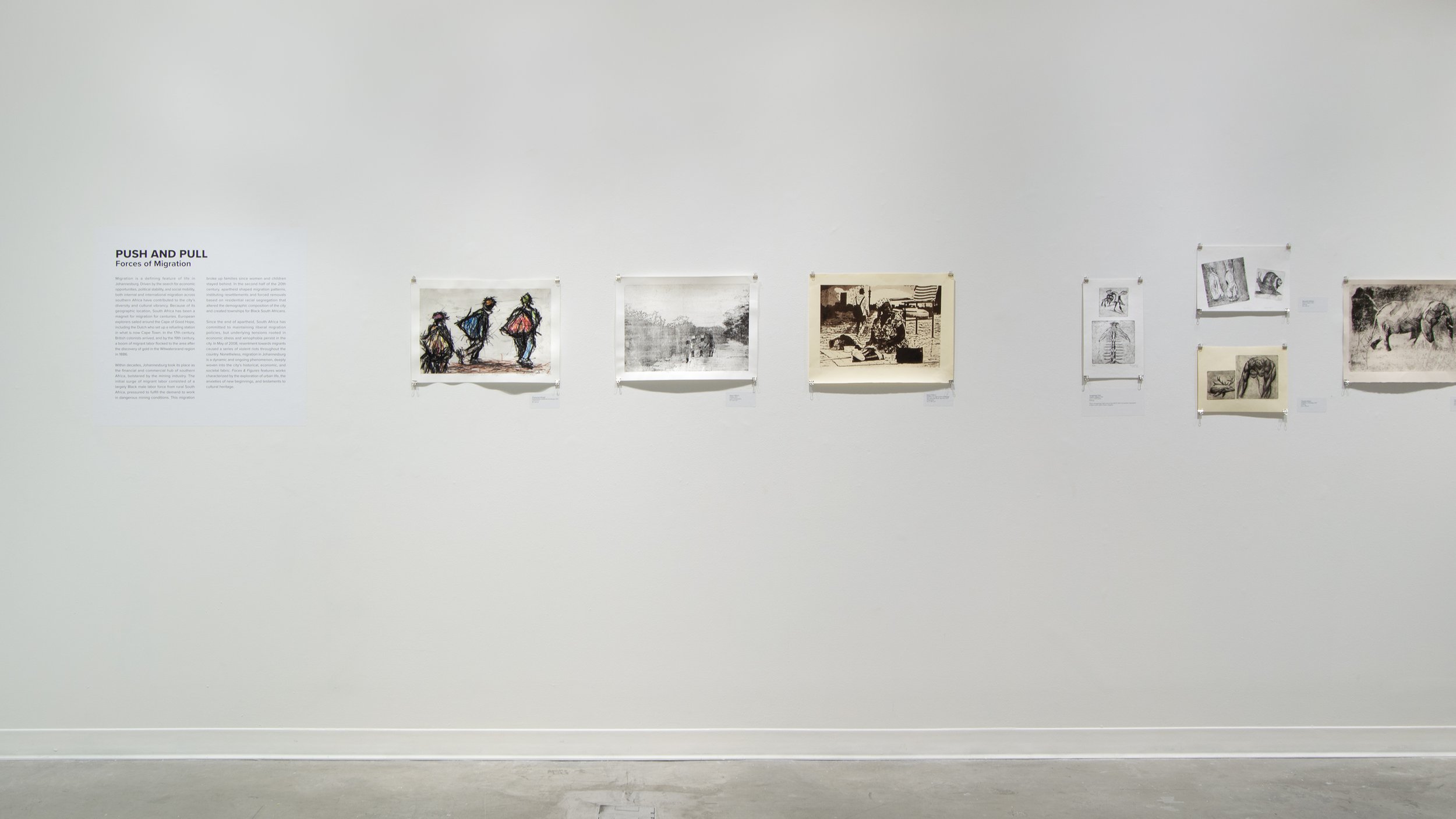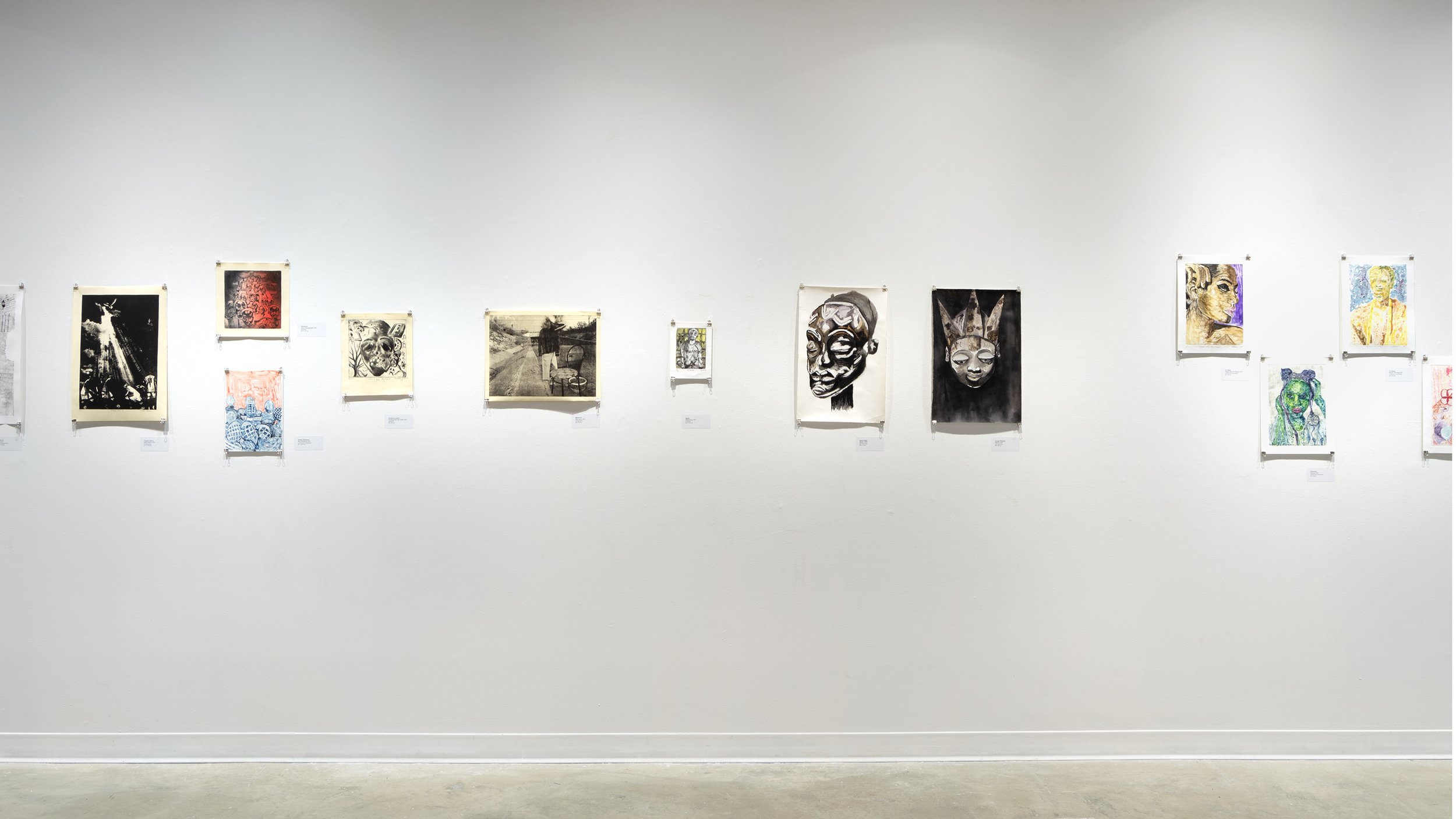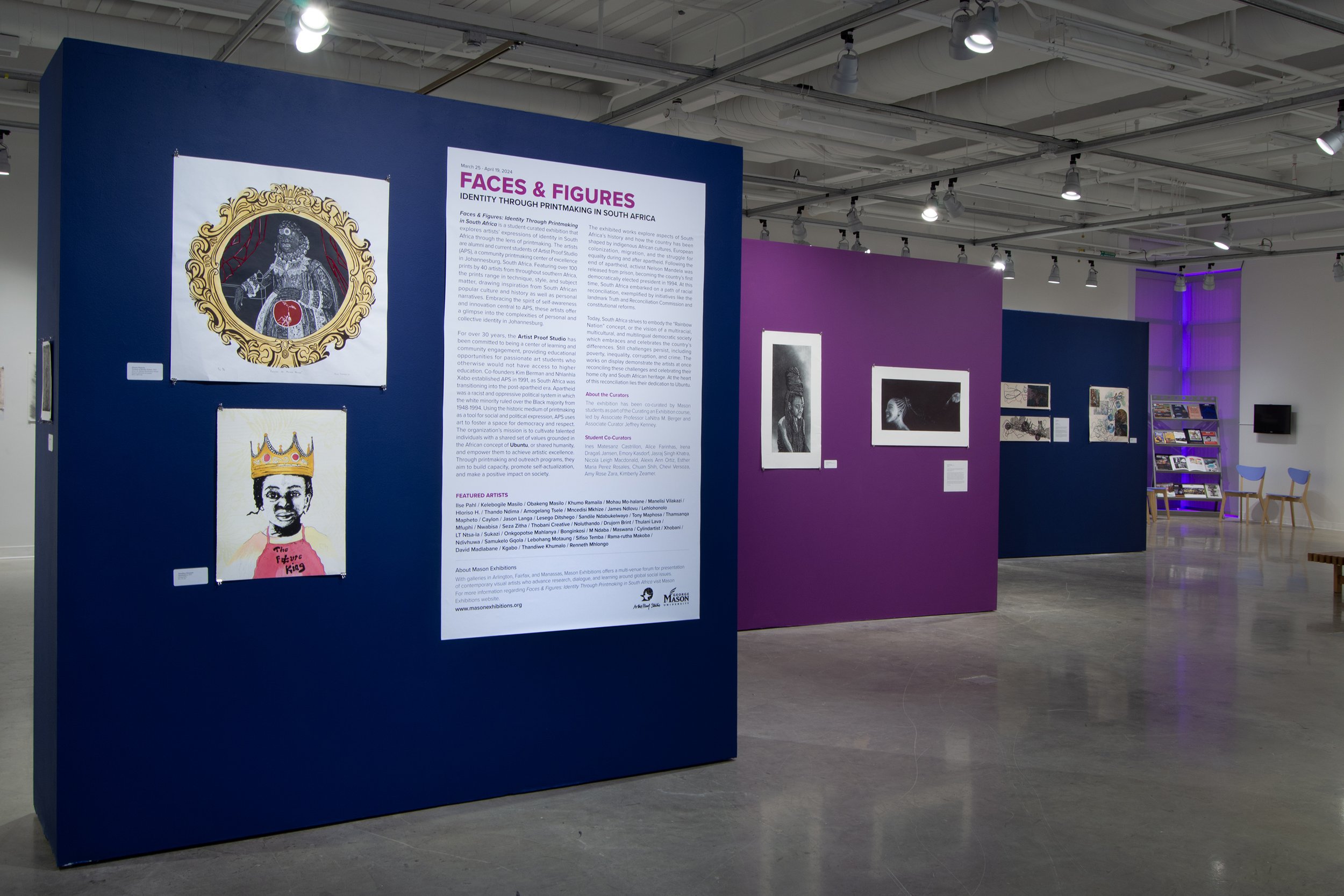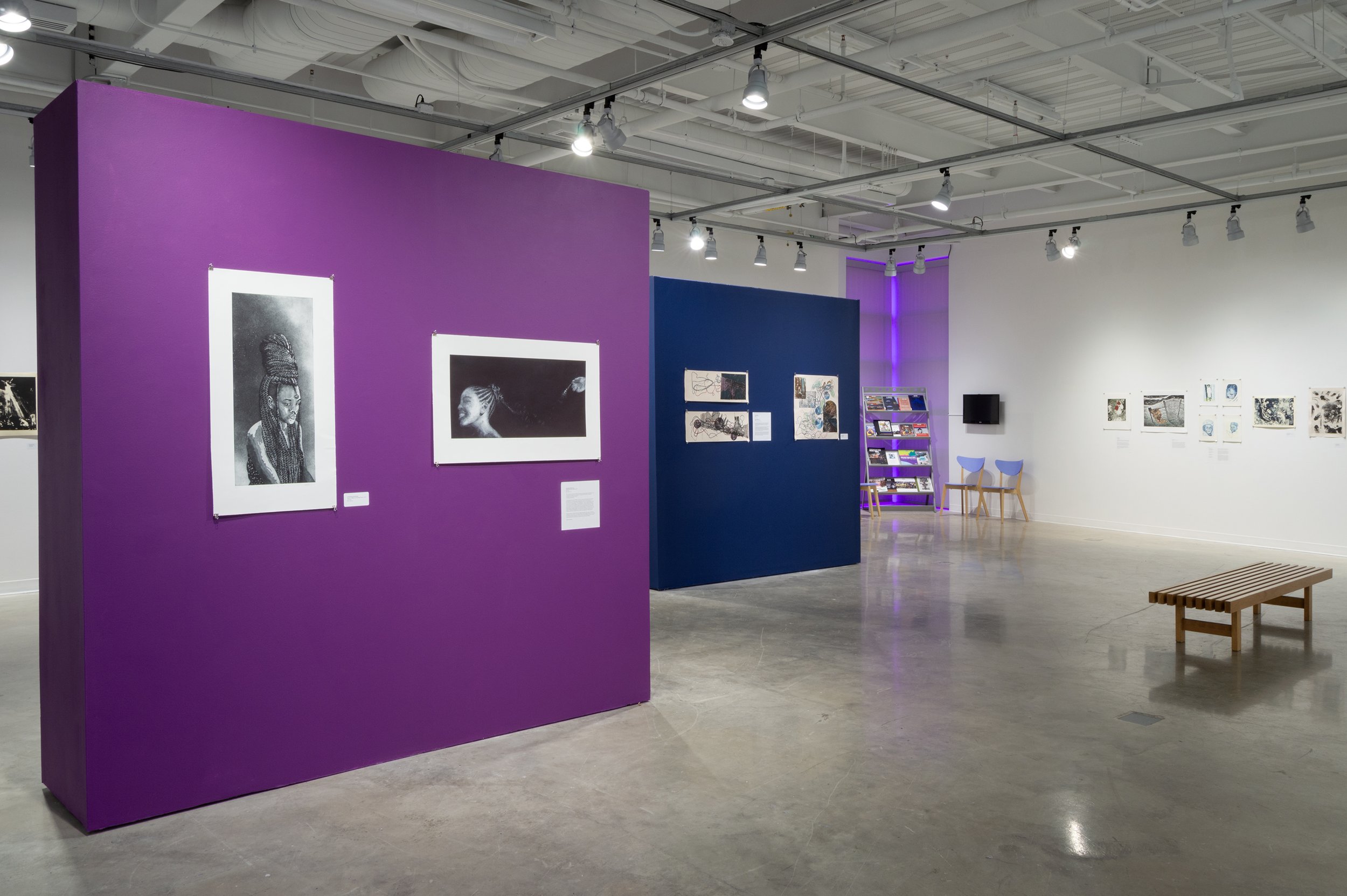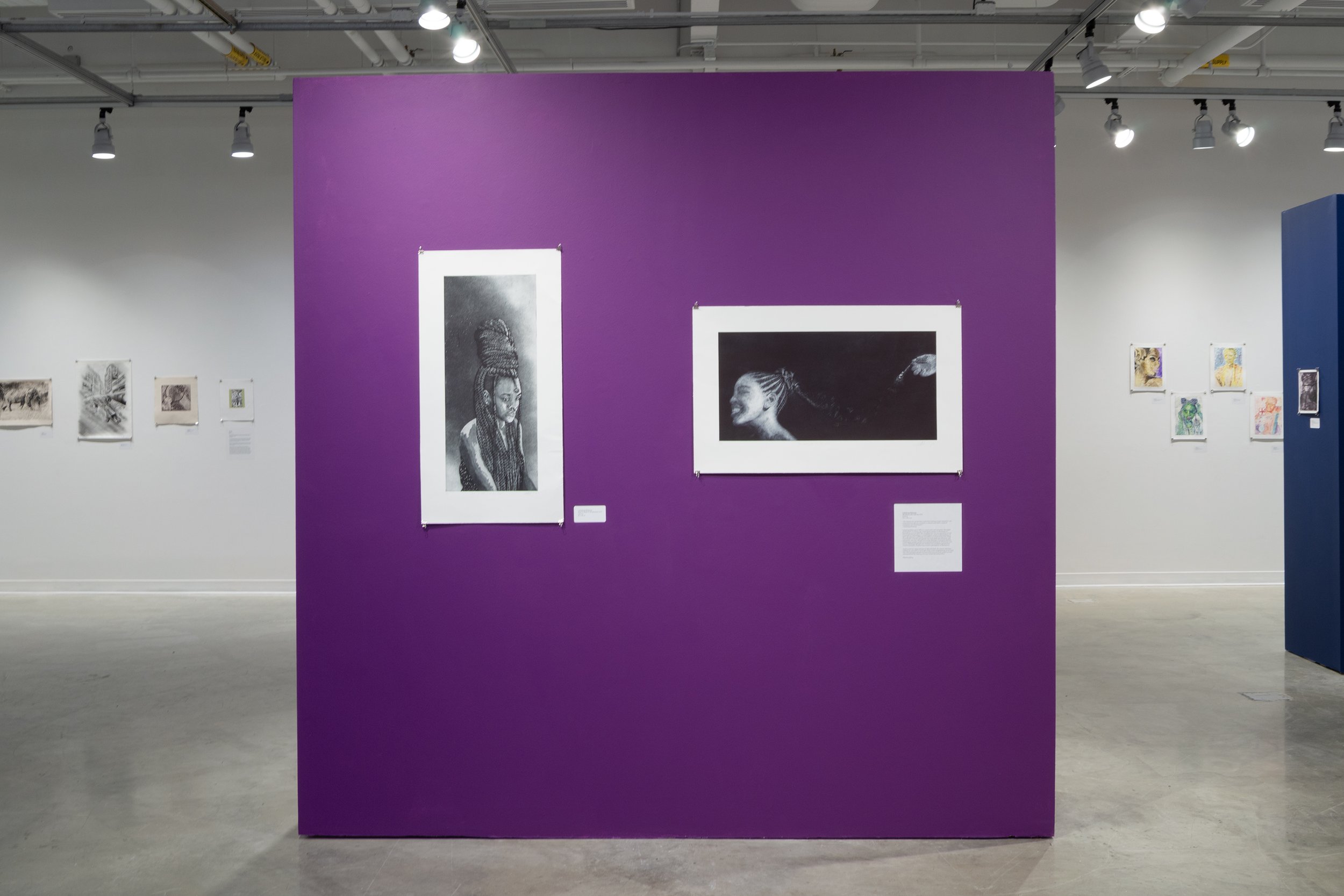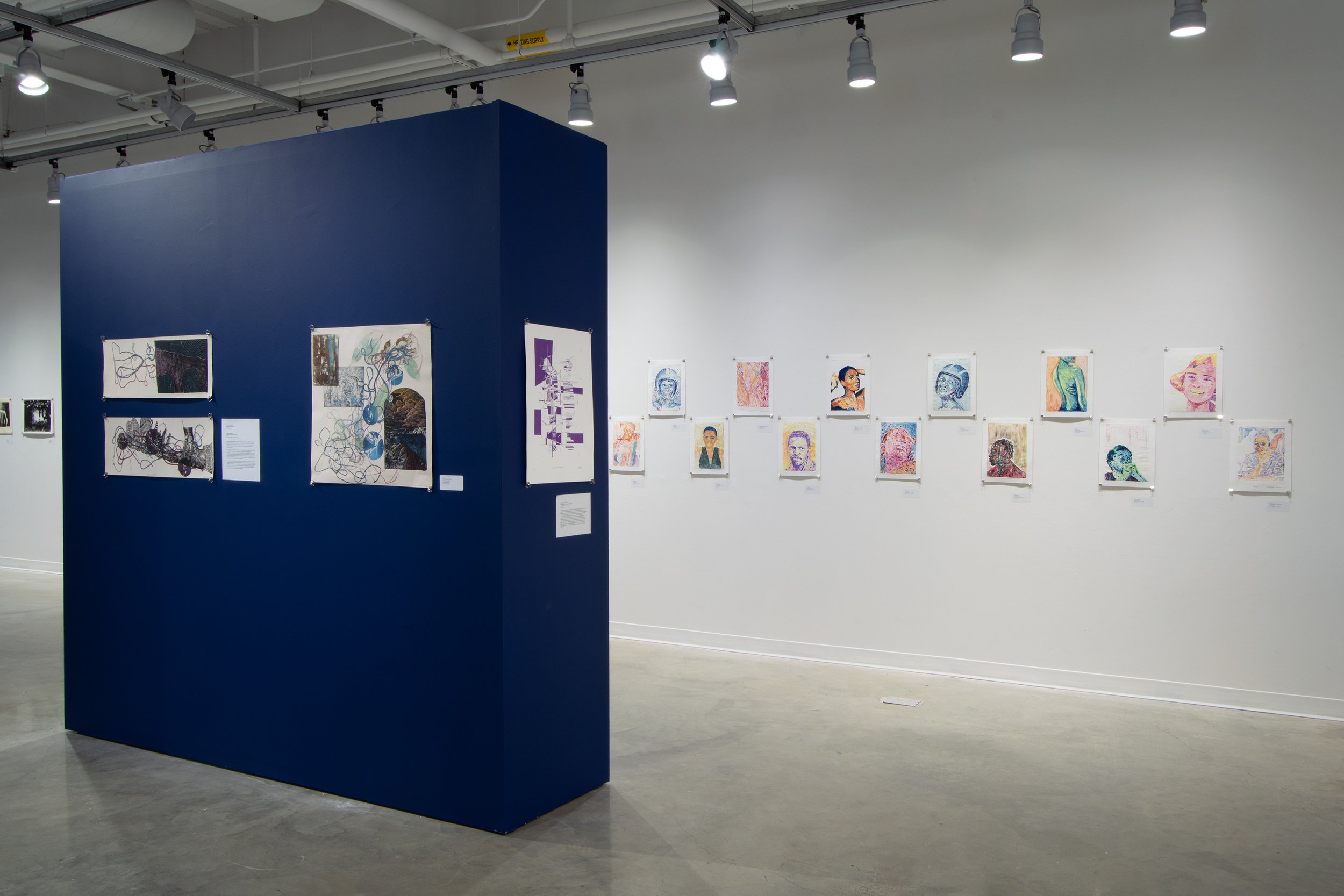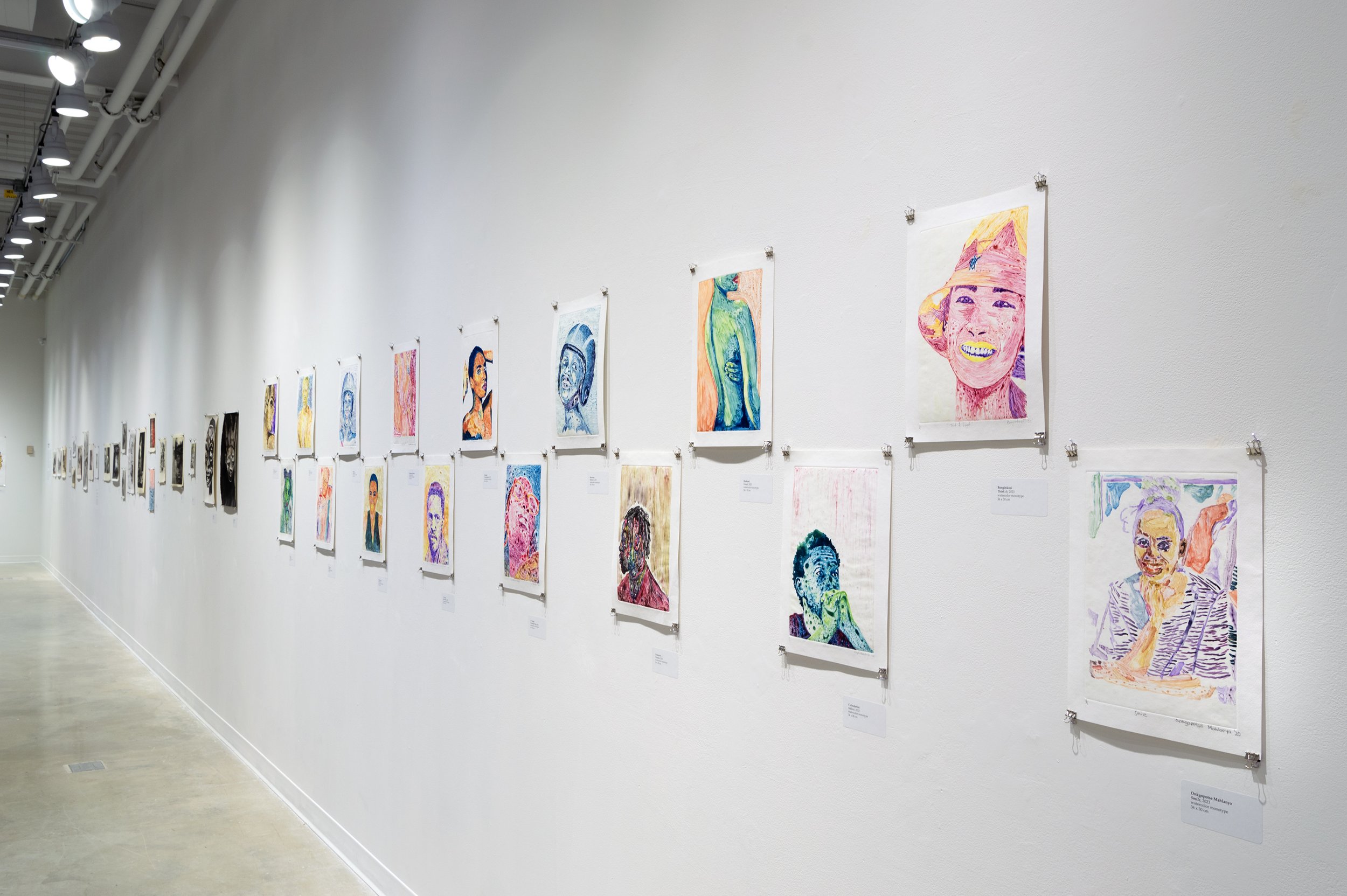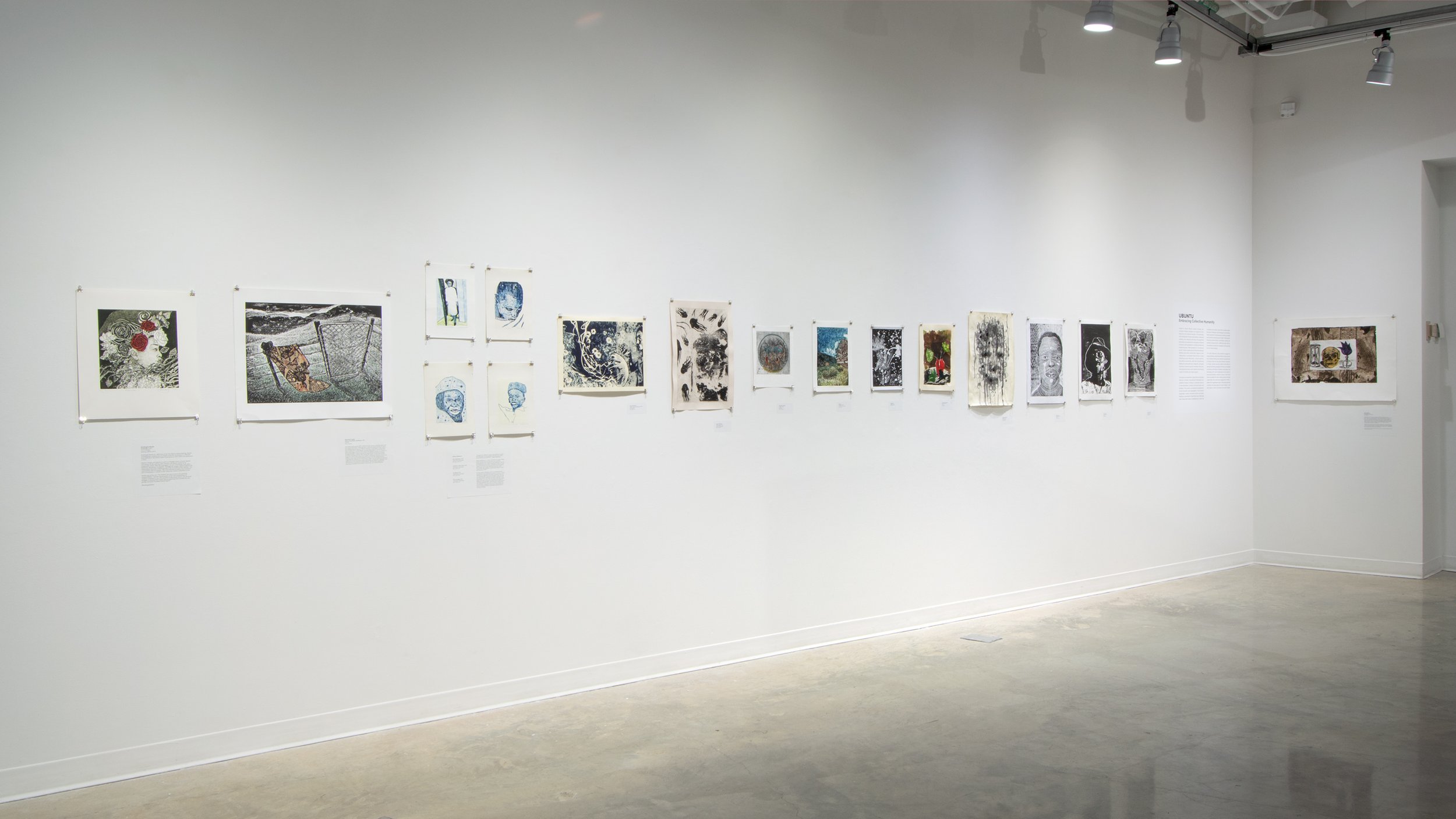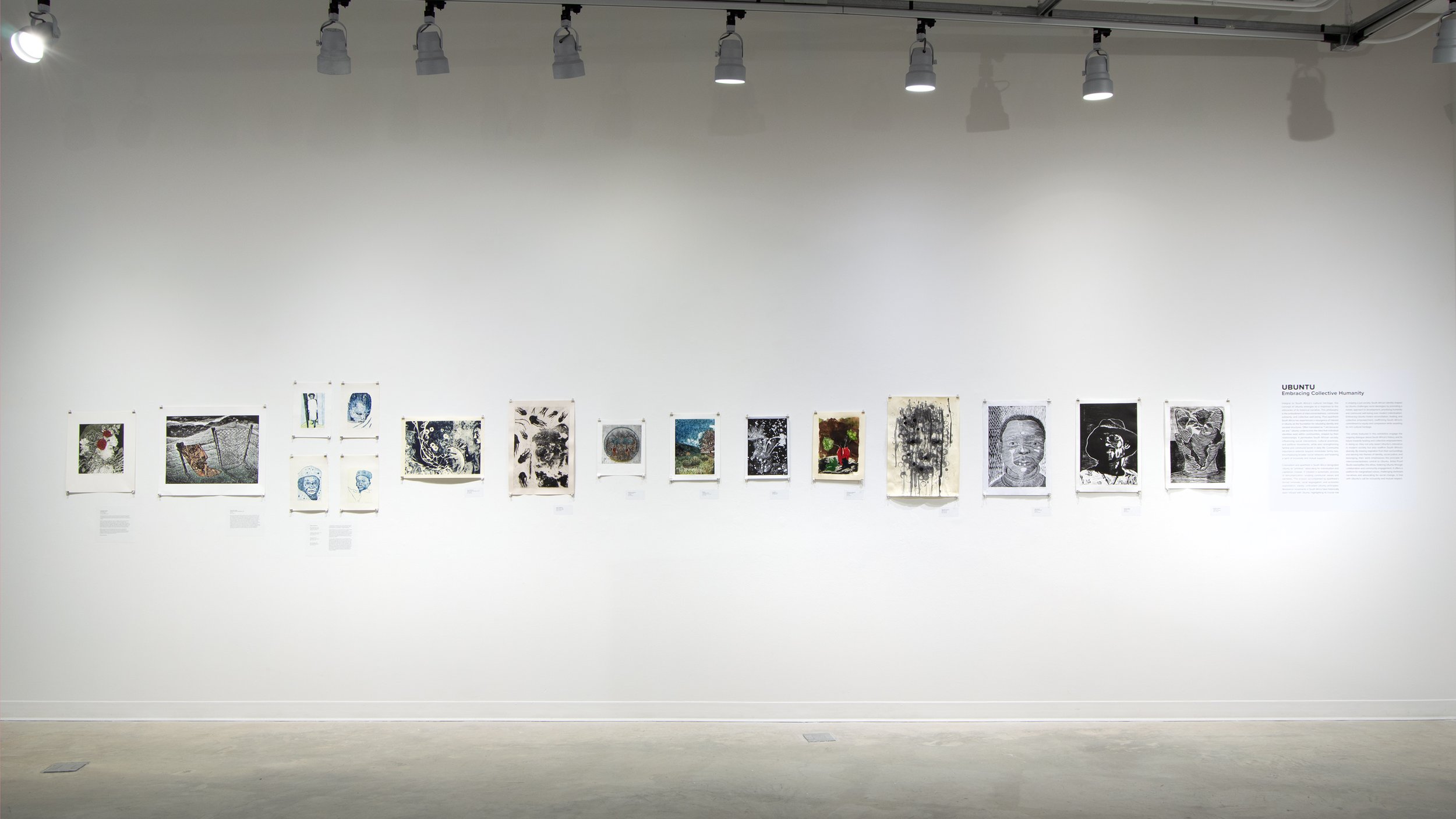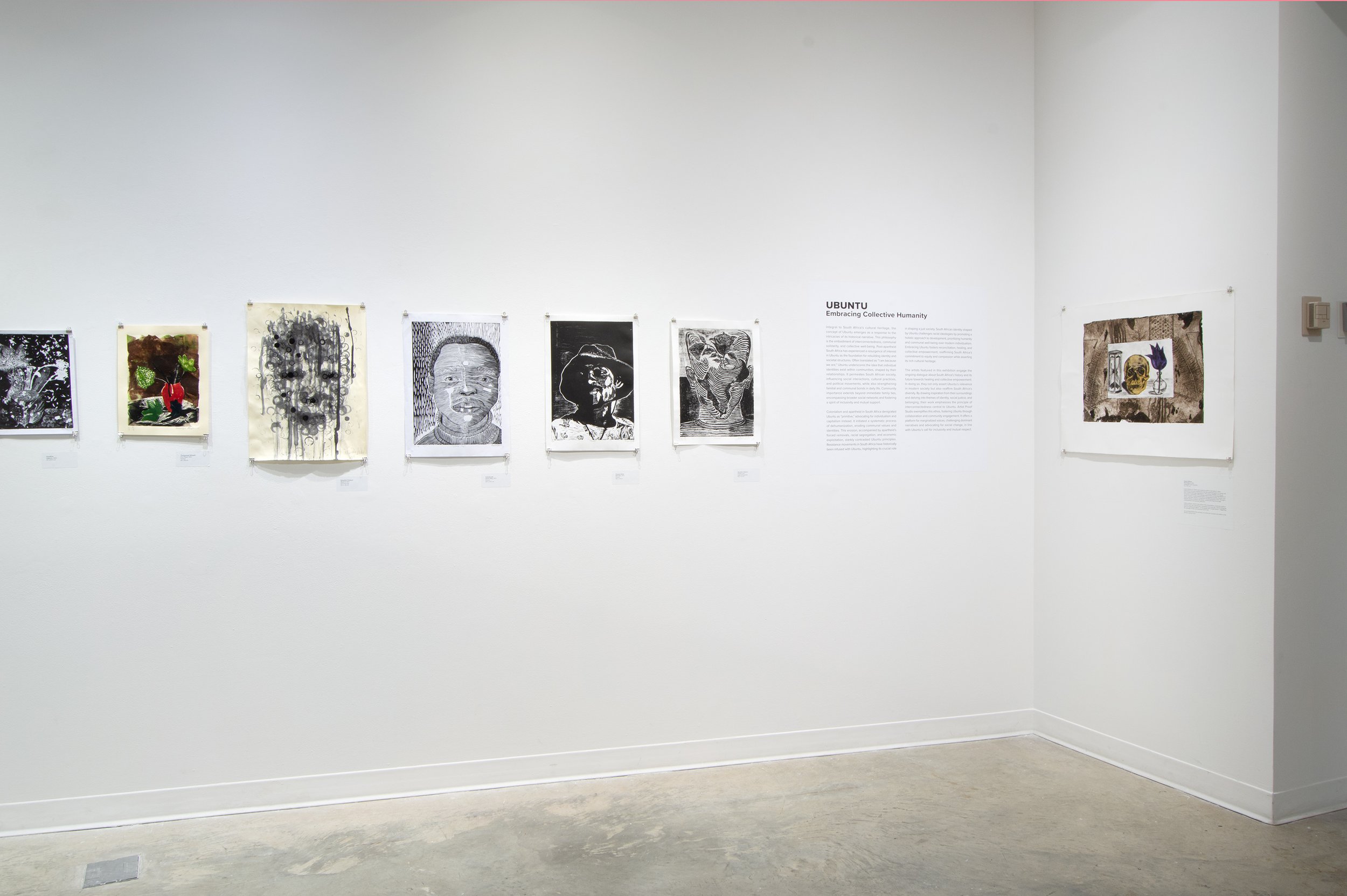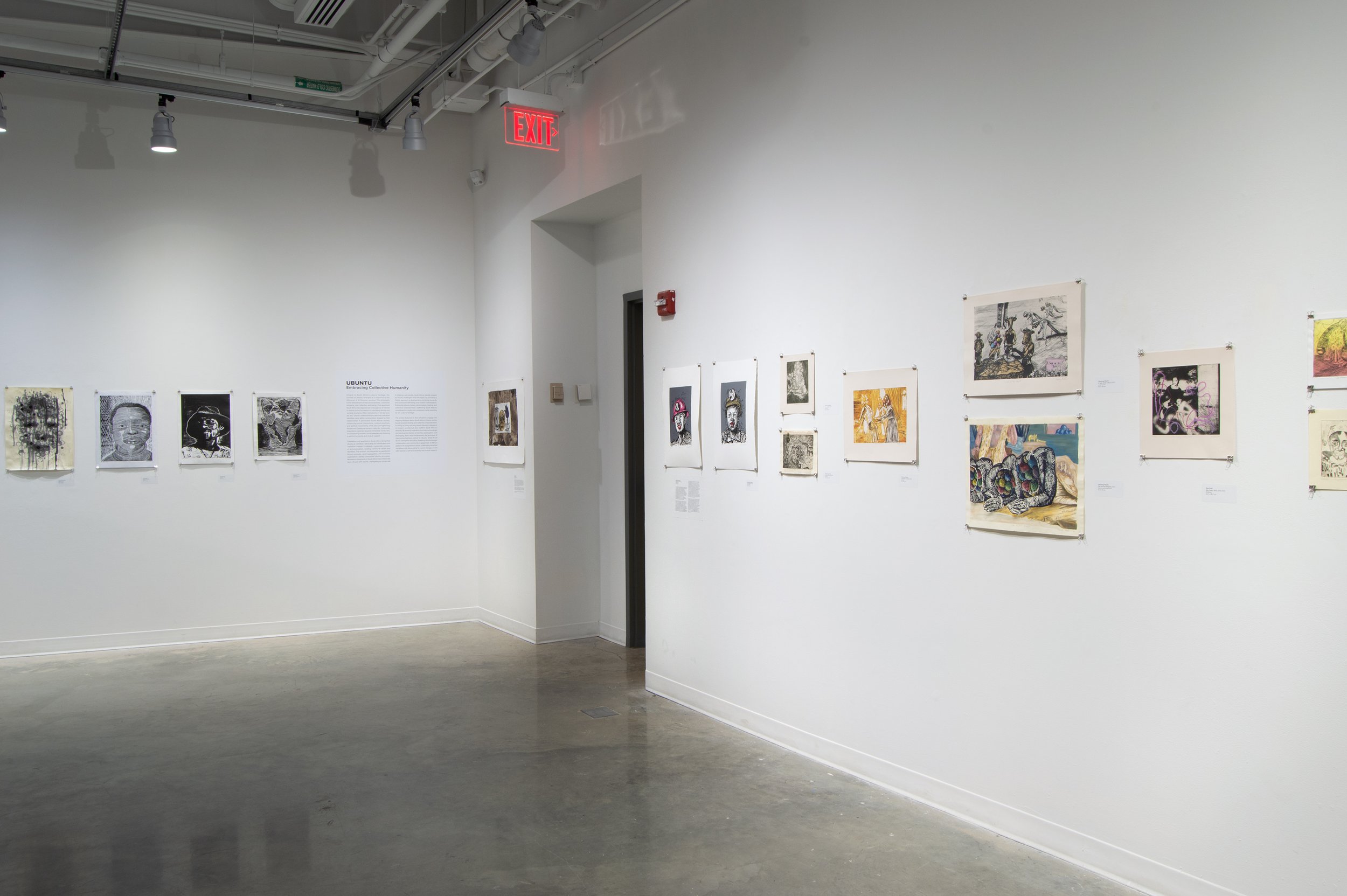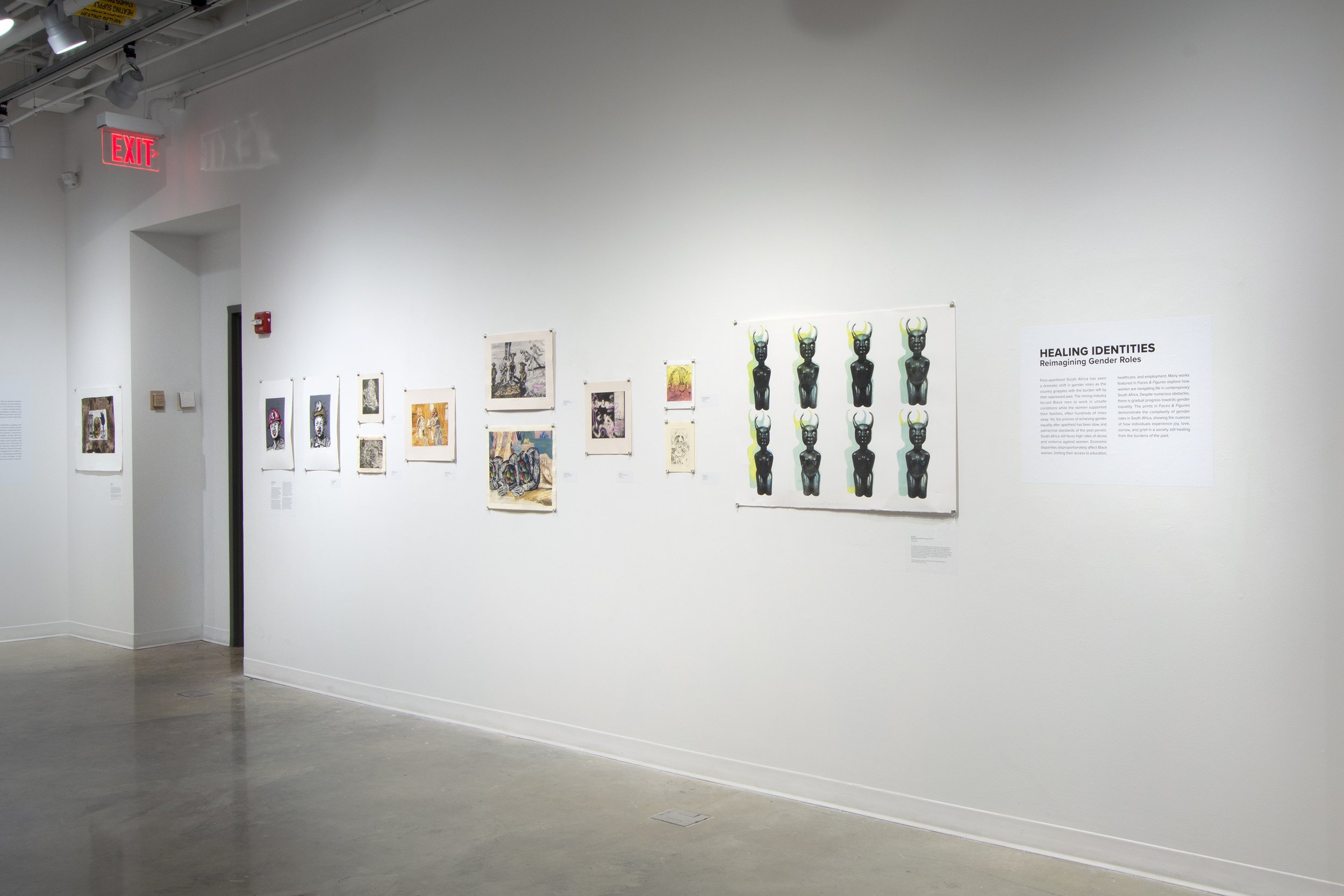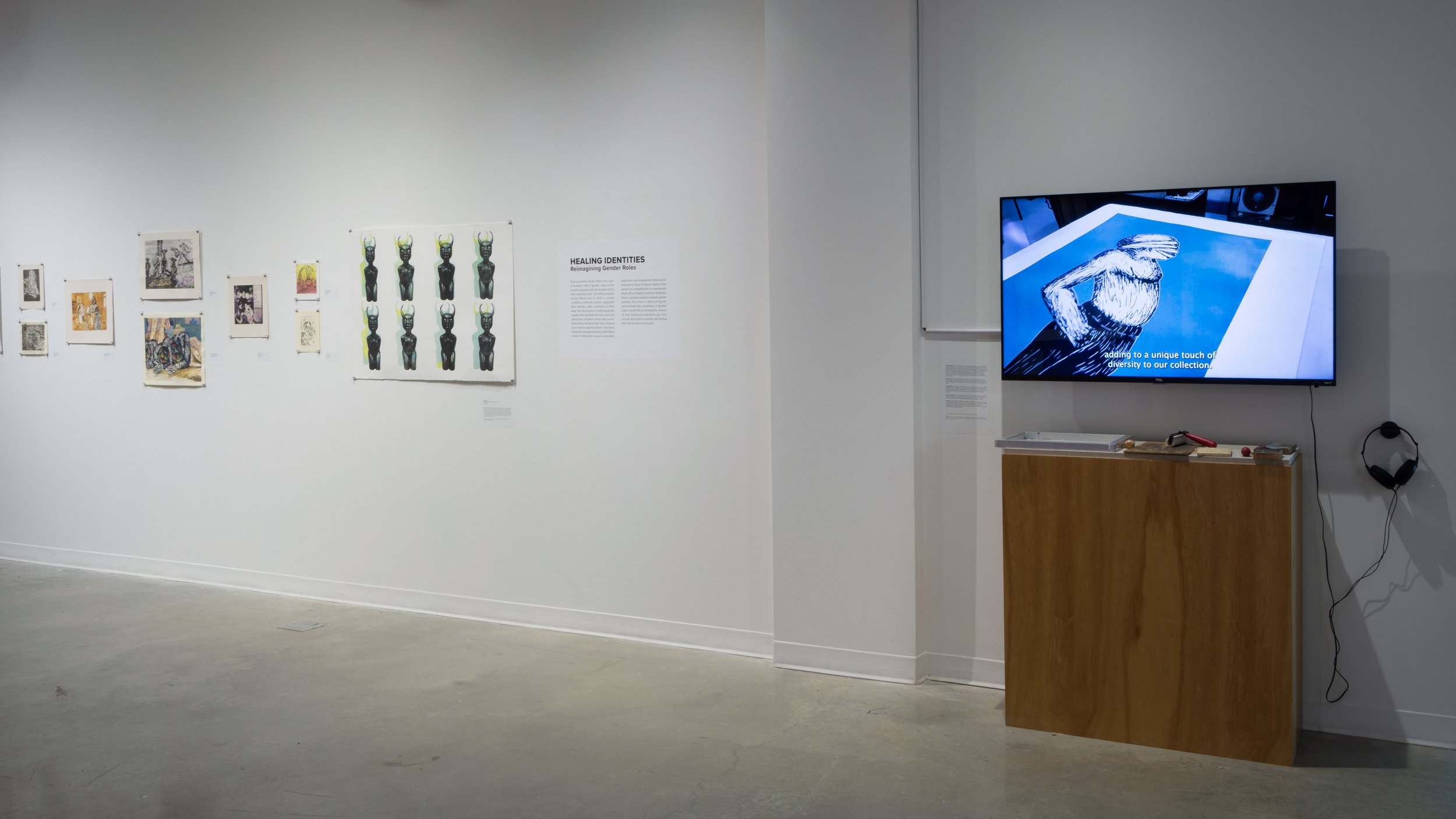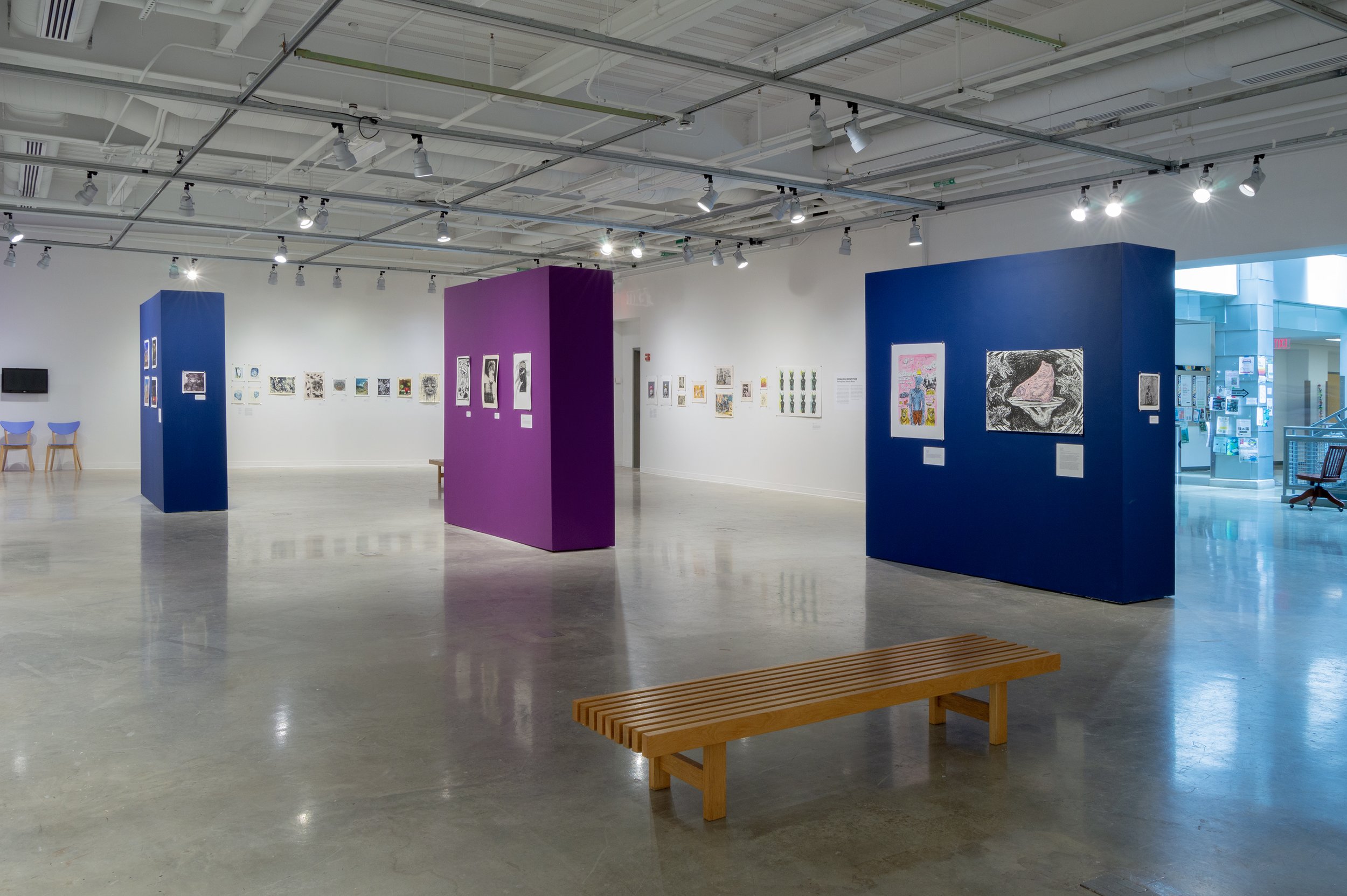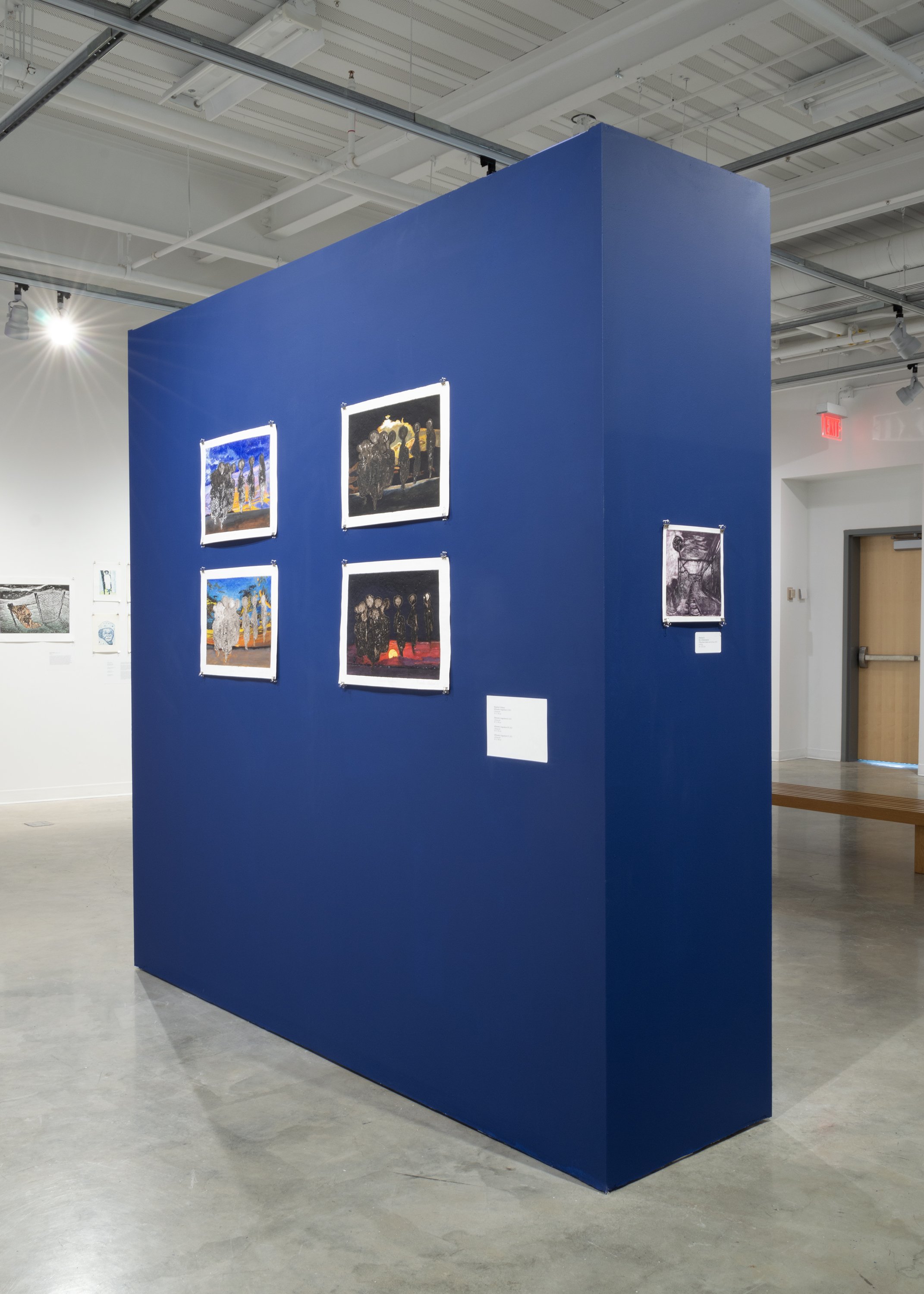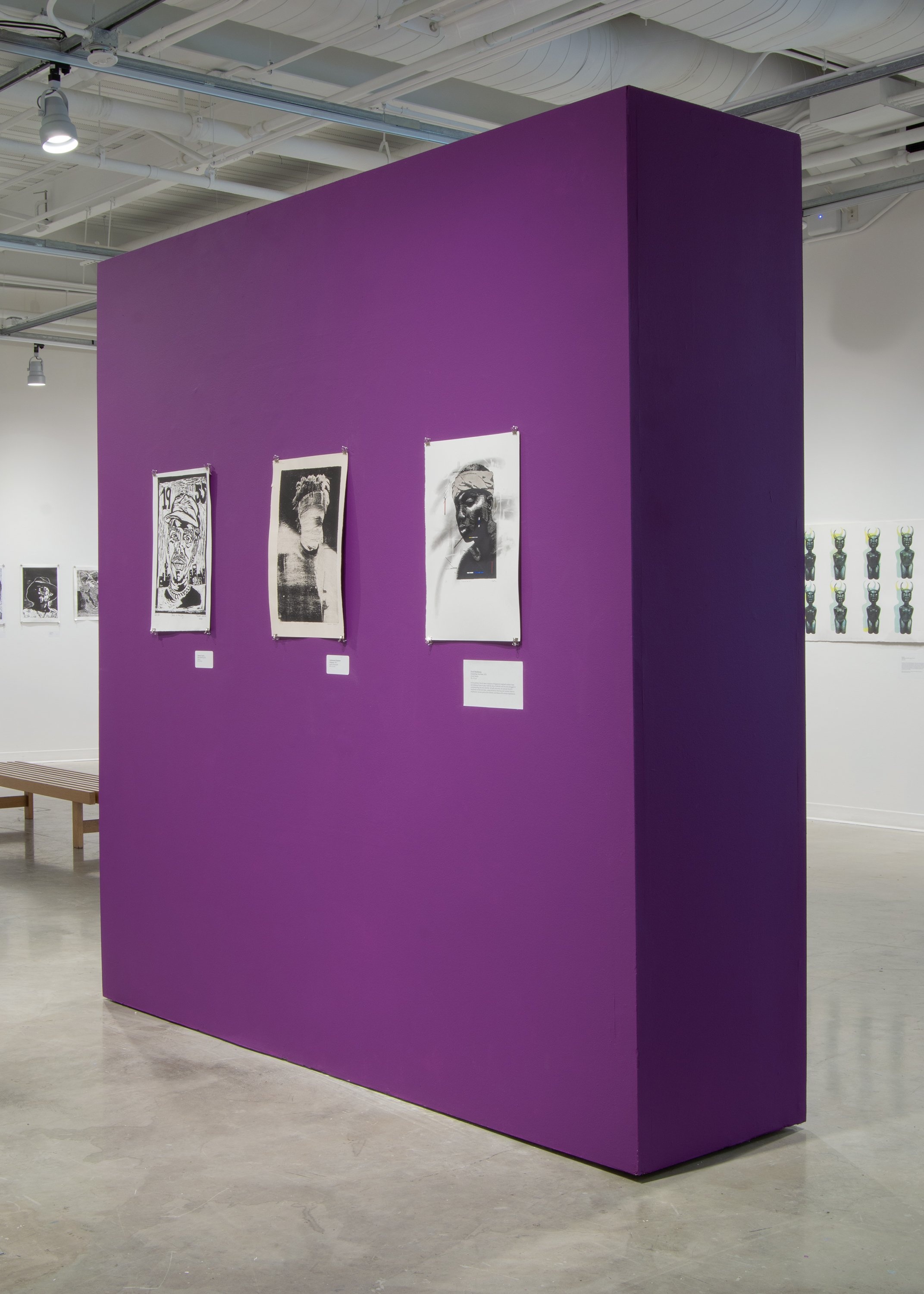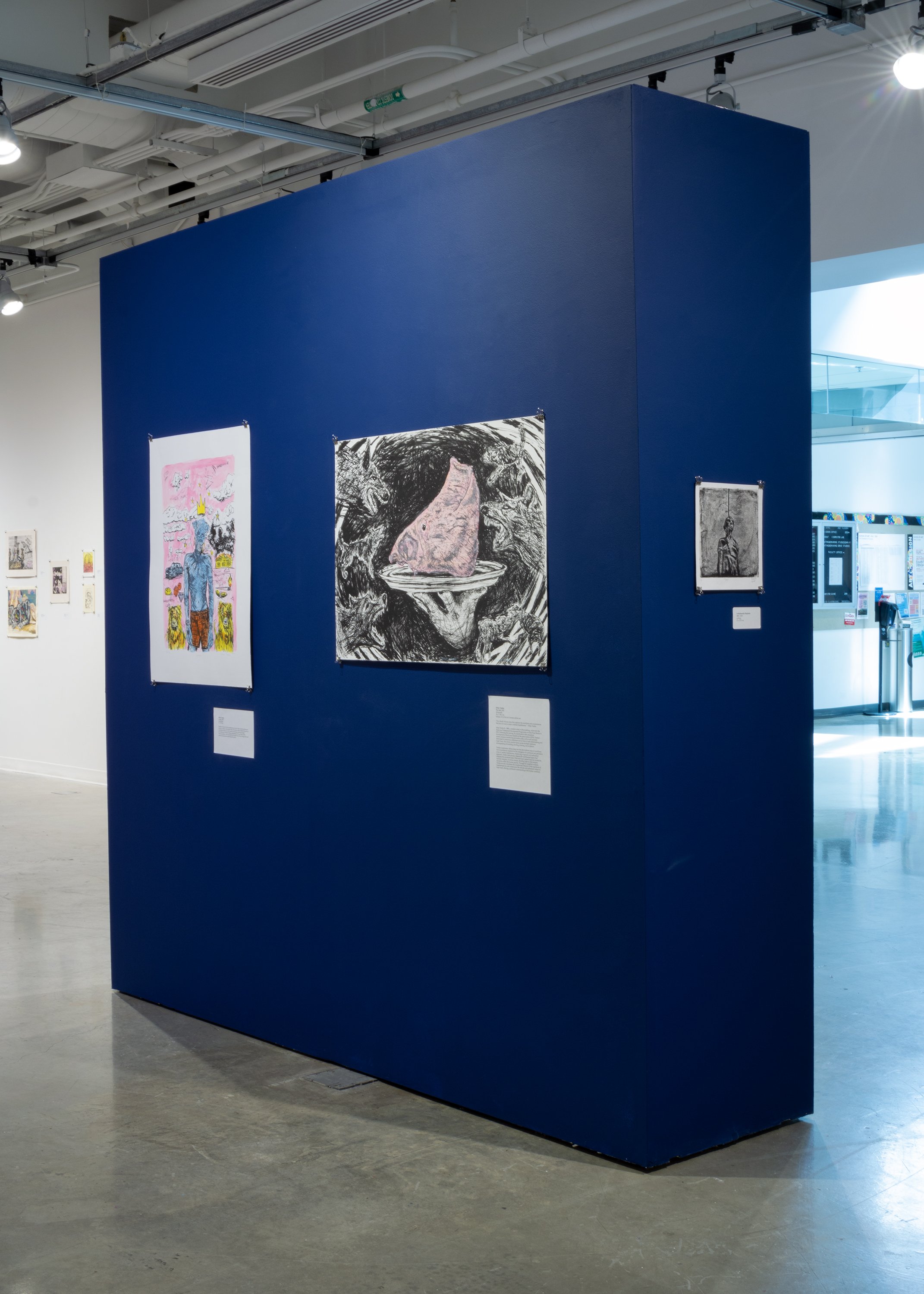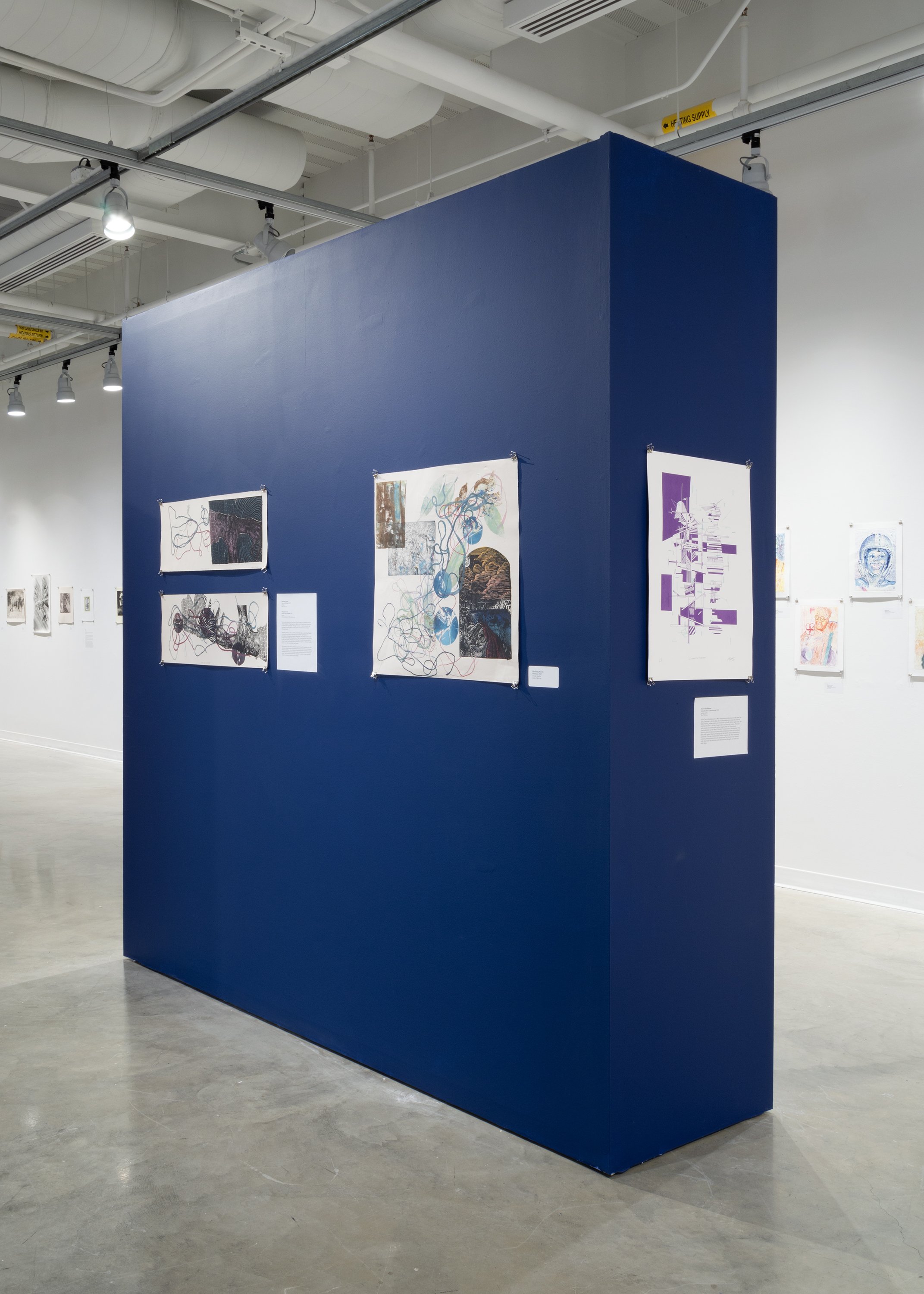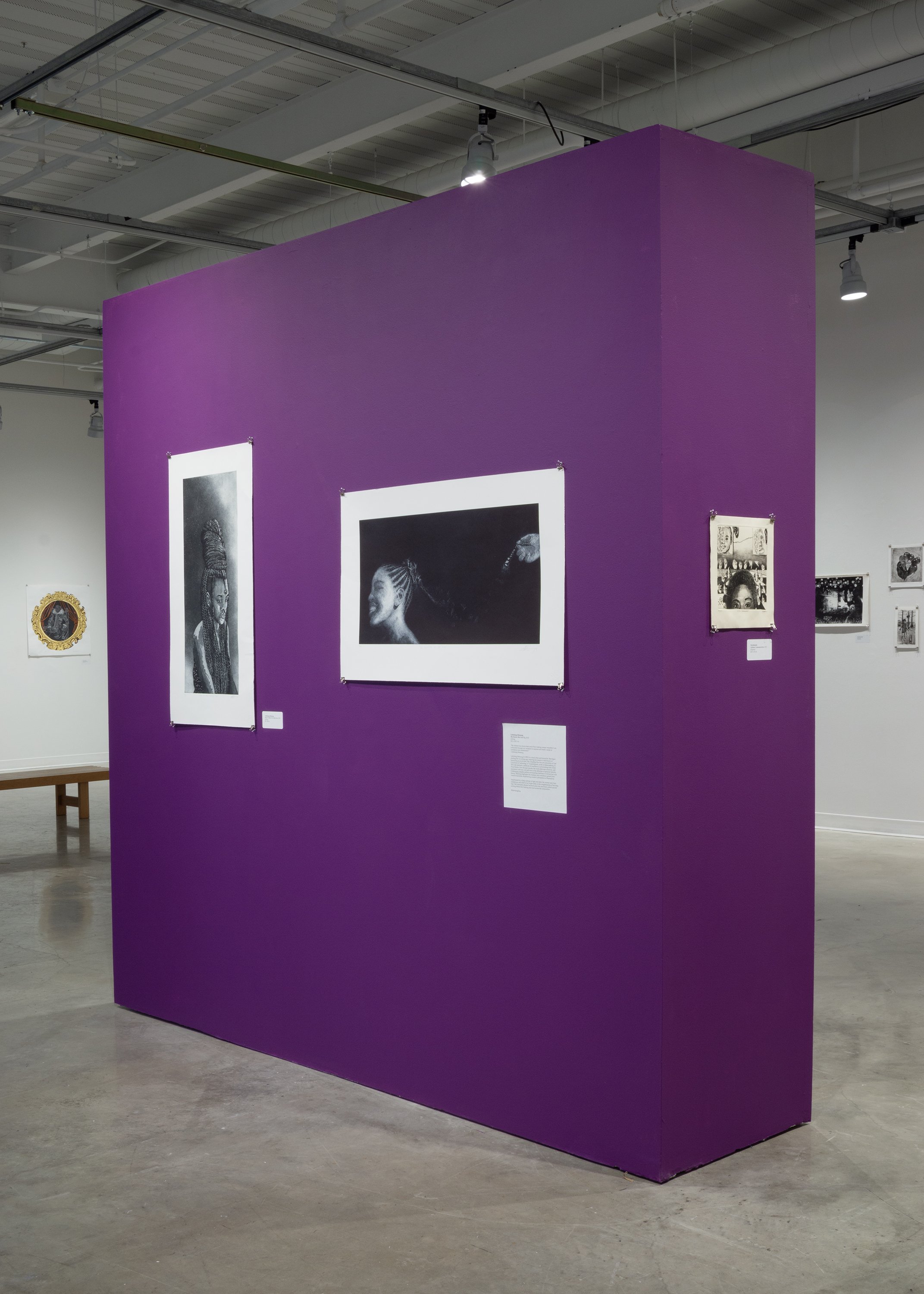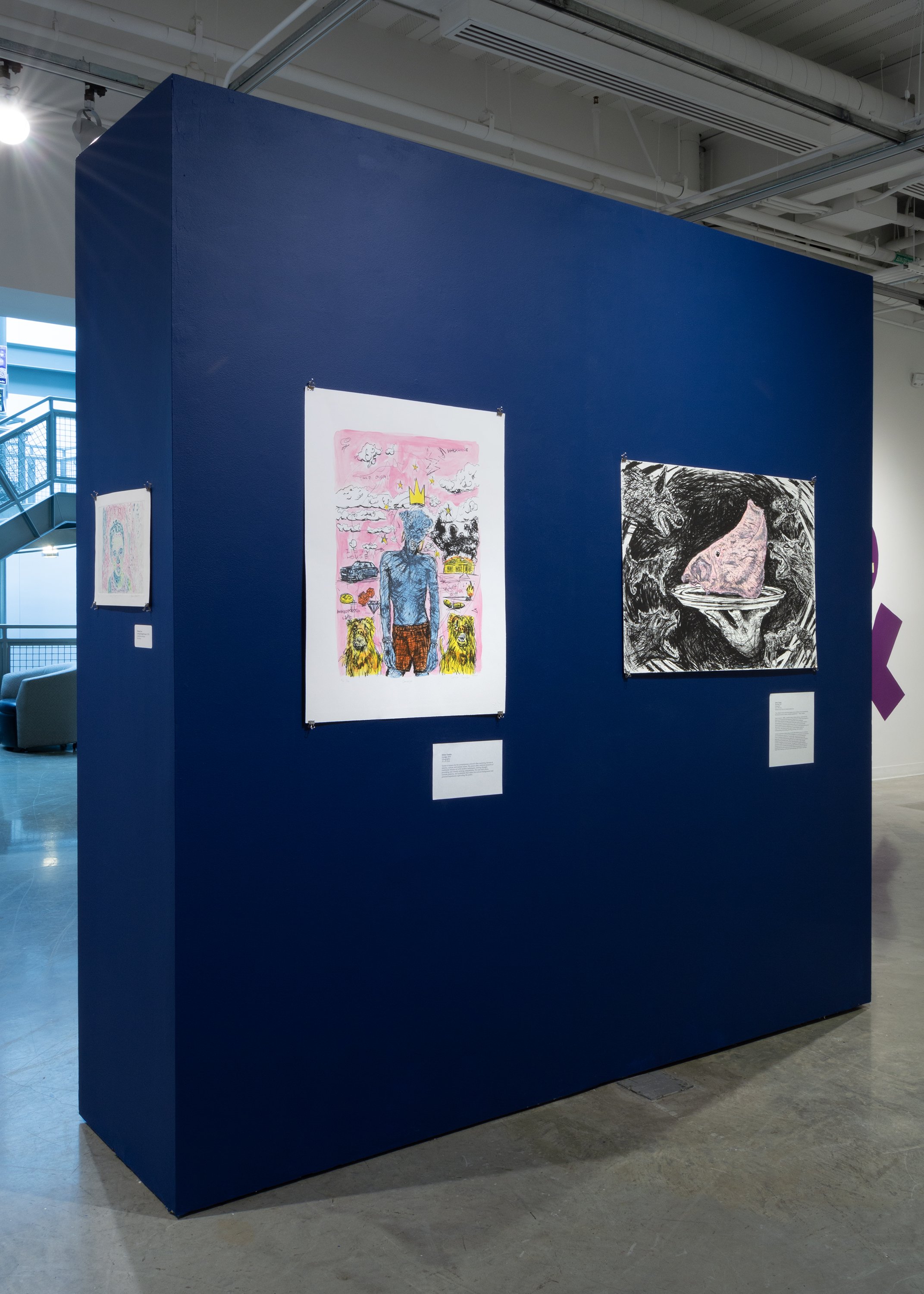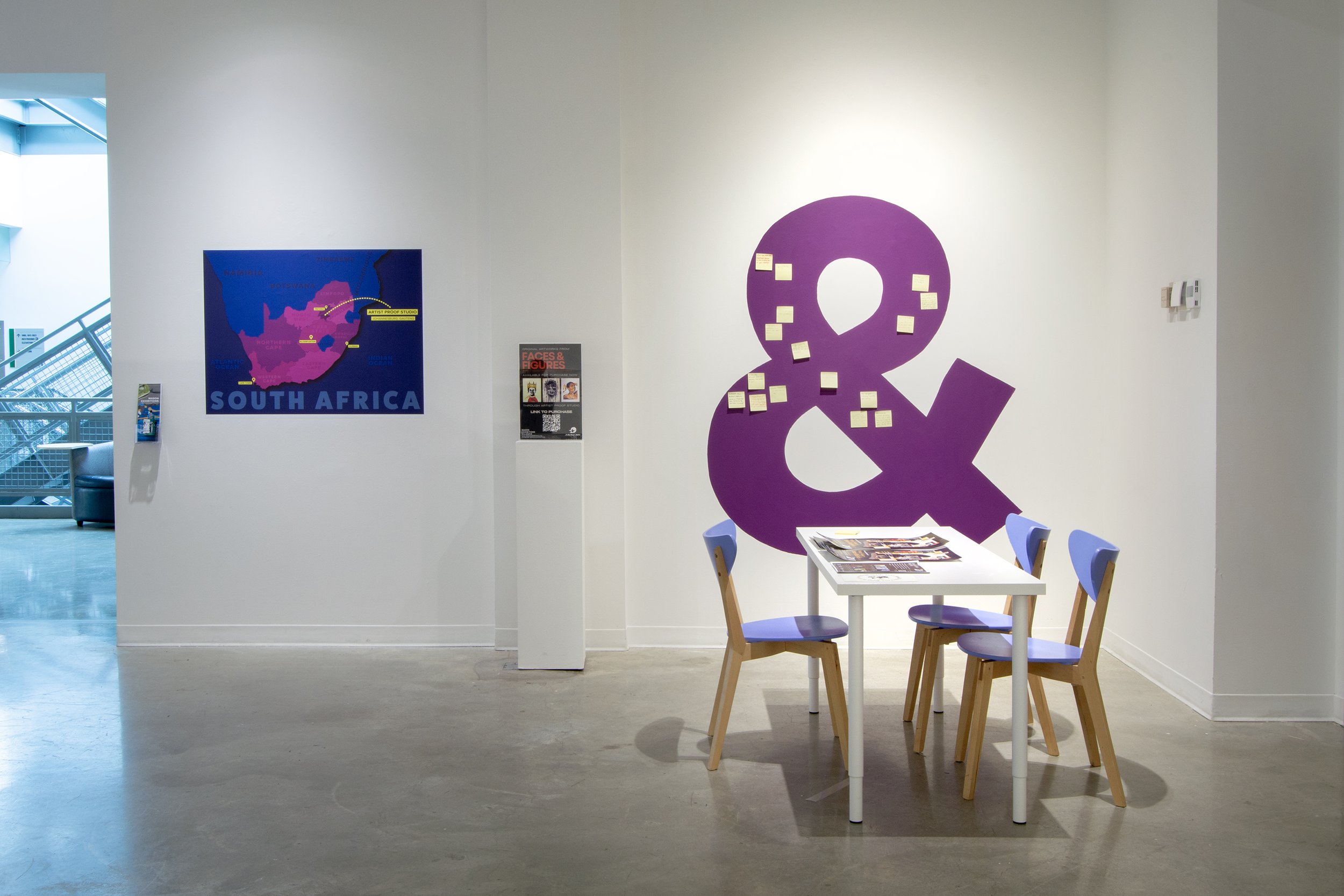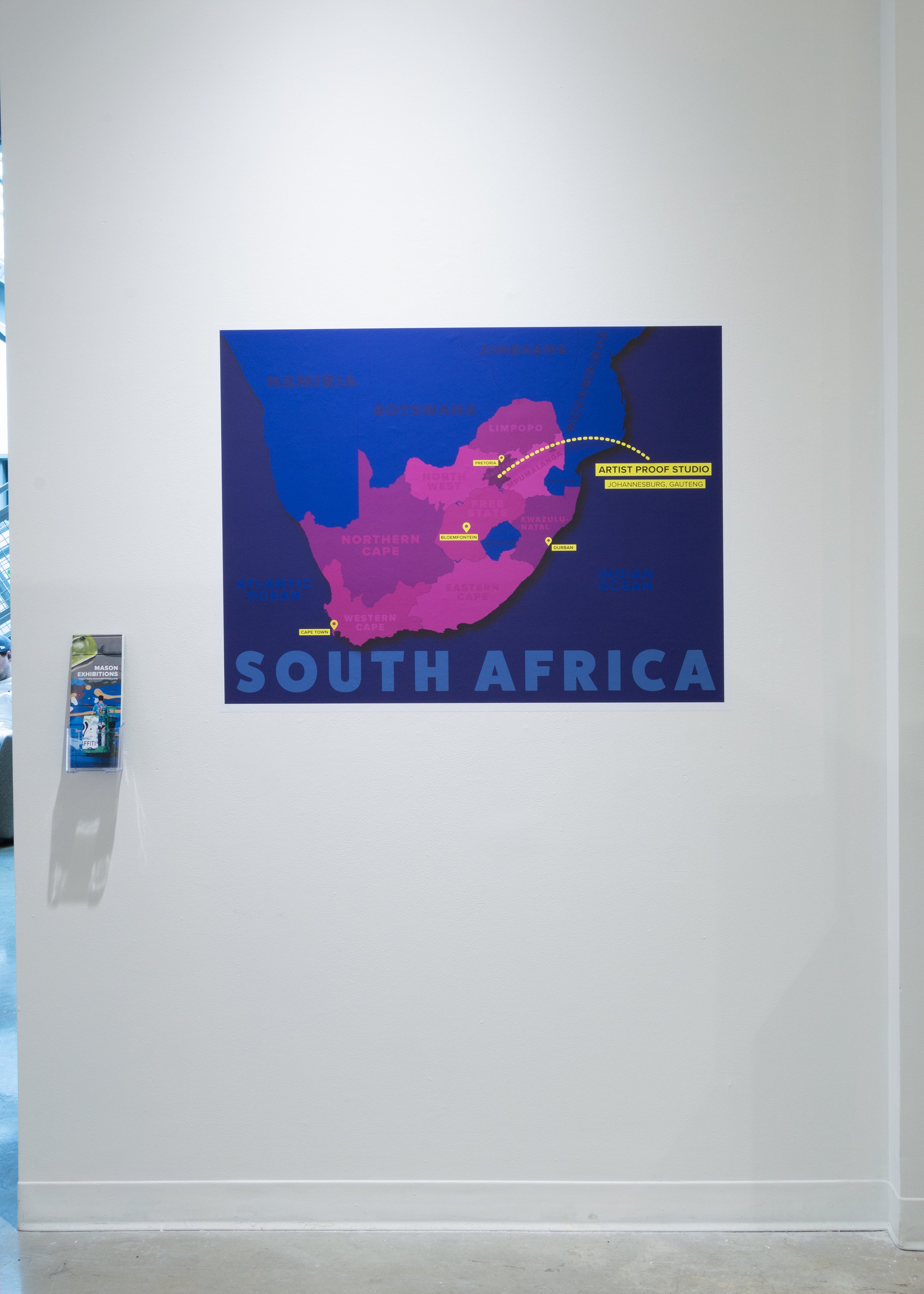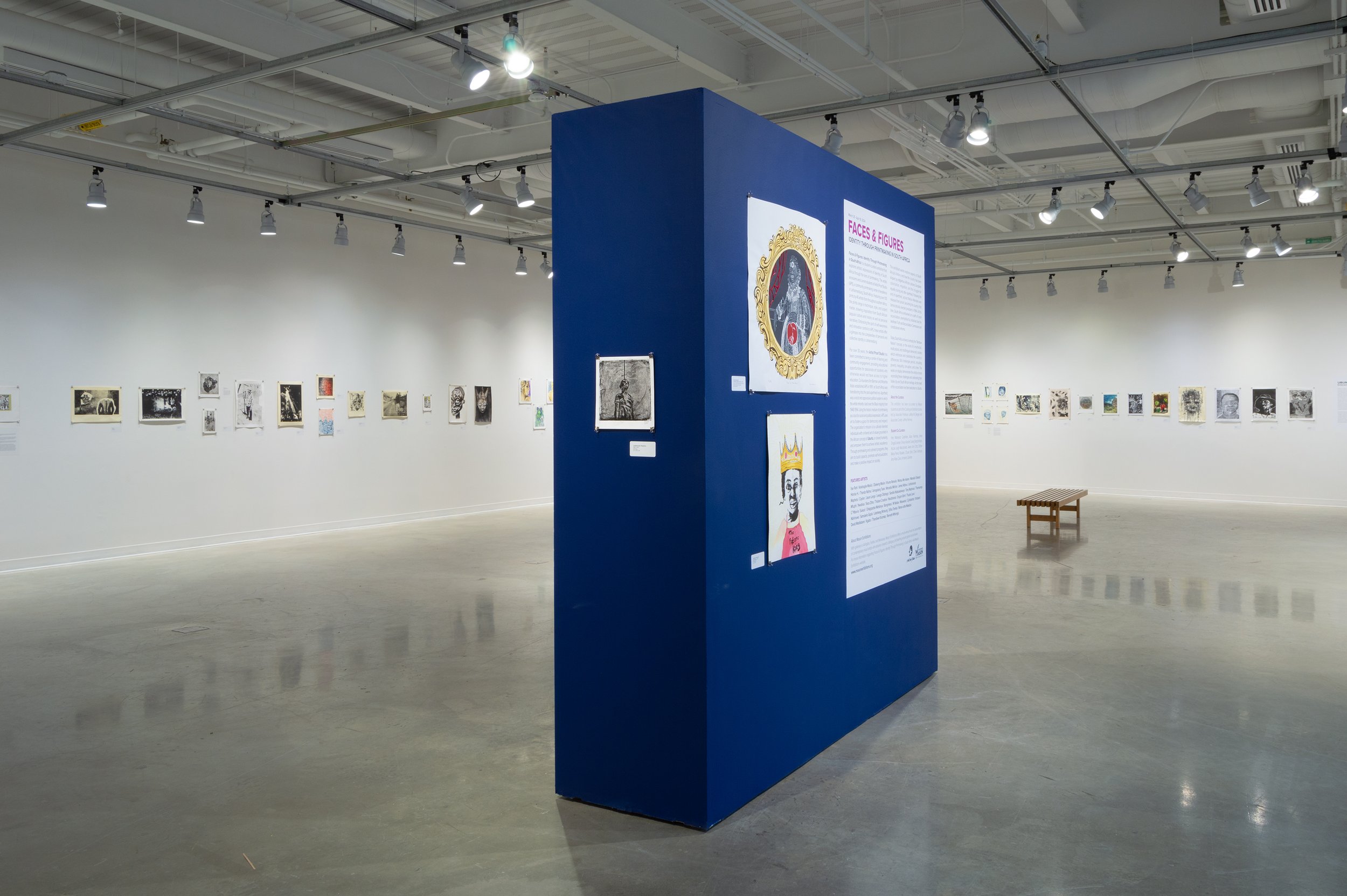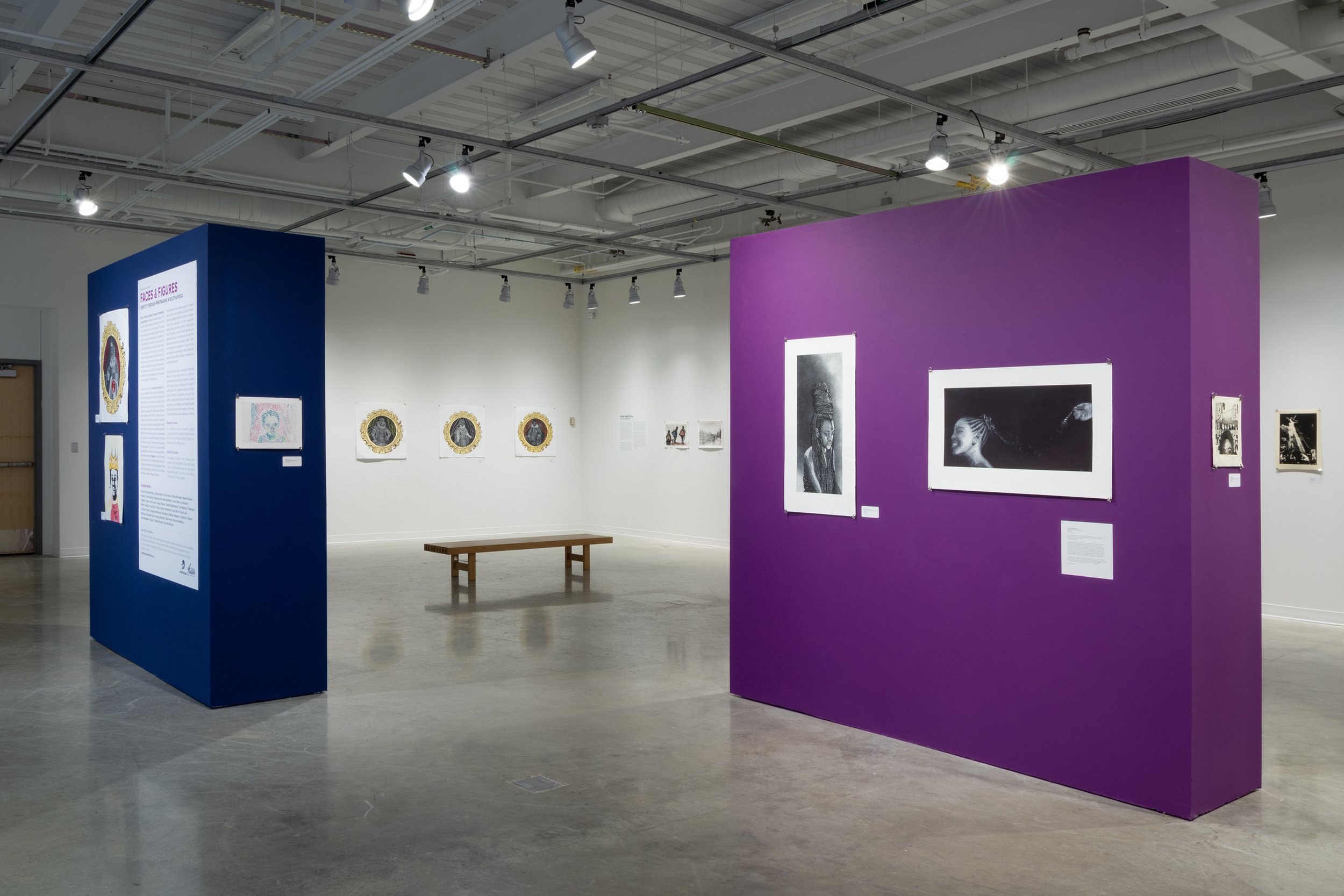FACES AND FIGURES: IDENTITY THROUGH PRINTMAKING IN SOUTH AFRICA
/FACES & FIGURES:
IDENTITY THROUGH PRINTMAKING
IN SOUTH AFRICA
March 25 - April 19, 2024
Gillespie Gallery, Art and Design Building
Fairfax, VA
The exhibition is co-curated by Mason students taking the Art History “Curating an Exhibition Course,” taught by Dr. LaNitra Berger.
About the Exhibition
Faces & Figures: Identity Through Printmaking in South Africa is a student-curated exhibition that explores artists’ expressions of identity in contemporary South Africa through the lens of printmaking. The artists are alumni and current students of the Artist Proof Studio (APS), a community printmaking center of excellence in Johannesburg, South Africa. Featuring over 100 prints by 40 artists from throughout southern Africa, the prints range in technique, style, and subject matter, drawing inspiration from South African popular culture and history as well as personal narratives. Embracing the spirit of self-awareness and innovation central to APS, these artists offer a glimpse into the complexities of personal and collective identity in Johannesburg.
The exhibited works explore aspects of South Africa’s history and how the country has been shaped by indigenous African cultures, European colonization, migration, and the struggle for equality during and after apartheid. Following the end of apartheid, activist Nelson Mandela was released from prison, becoming the country’s first democratically elected president in 1994. At this time, South Africa embarked on a path of racial reconciliation, exemplified by initiatives like the landmark Truth and Reconciliation Commission and constitutional reforms.
Today, South Africa strives to embody the “Rainbow Nation” concept, or the vision of a multiracial, multicultural, and multilingual democratic society that embraces and celebrates the country’s differences. Still, challenges persist, including poverty, economic inequality, corruption, and crime. The works on display demonstrate the artists’ efforts to reconcile these challenges while celebrating life in Johannesburg. At the heart of this reconciliation lies their dedication to expressing Ubuntu principles in their art.
Featured Artists: Ilse Pahl · Kelebogile Masilo · Obakeng Masilo · Khumo Ramaila · Mohau Mohalane · Manelisi Vilakazi · Hloriso H · Thando Ndima · Amogelang Tsele · Mncedisi Mkhize · James Ndlovu · Lehlohonolo Mapheto · Caylon · Jason Langa · Lesego Ditshego · Sandile Ndabukelwayo · Tony Maphosa · Thamsanqa Mfuphi · Nwabisa · Seza Zitha · Thobani Creative · Noluthando · Drujorn Brint · Thulani Lava · LT Ntsala · Sukazi · Onkgopotse Mahlanya · Bonginkosi · M Ndaba · Maswana · Cylindartist · Xhobani Ndivhuwa ·Samukelo Gqola · Lebohang Motaung · Sifiso Temba · Ramarutha Makoba · David Madlabane · Kgabo · Thandiwe Khumalo
‘Art History Students Learn How to Mount an Exhibition’ by Shayla Brown
GILLESPIE GALLERY INSTALLATION IMAGES
Themes
Faces & Figures highlights three social contributors shaping urban life in the city – Migration, Family and Community, and Gender Roles. These driving forces influence the artists’ sense of self and their interactions with the world around them. Both internal and international migration are represented in the multicultural makeup of the artists whose work reflects the cultural vibrancy and diverse demographics of Johannesburg. The concept of family is represented as something that extends beyond merely blood ties, but rather something that encompasses broader community networks where collective support and solidarity thrive. The interconnectedness of individuals underscores a culture of mutual respect, shared responsibility, and communal well-being. Traditional gender roles in South Africa are shifting, challenging restrictive stereotypes that shape behavior and expectations especially as more women enter the workforce. Artists navigate these changing dynamics and overturn traditional notions of the feminine and masculine.
Push and Pull: Forces of Migration
Migration is a defining feature of life in Johannesburg. Driven by the search for economic opportunities, political stability, and social mobility, both internal and international migration across southern Africa have contributed to the city’s diversity and cultural vibrancy. Because of its geographic location, South Africa has been a magnet for migration for centuries. European explorers sailed around the Cape of Good Hope, including the Dutch who set up a refueling station in what is now Cape Town. In the 17th century, British colonists arrived, and by the 19th century, a boom of migrant labor flocked to the area after the discovery of gold in the Witwatersrand region in 1886.
Within decades, Johannesburg took its place as the financial and commercial hub of southern Africa, bolstered by the mining industry. The initial surge of migrant labor consisted of a largely Black male labor force from rural South Africa, pressured to fulfill the demand to work in dangerous mining conditions. This migration broke up families since women and children stayed behind. In the second half of the 20th century, apartheid shaped migration patterns, instituting resettlements and forced removals based on residential racial segregation that altered the demographic composition of the city and created townships for Black South Africans.
Since the end of apartheid, South Africa has committed to maintaining liberal migration policies, but underlying tensions rooted in economic stress and xenophobia persist in the city. In May of 2008, resentment towards migrants caused a serious of violent riots throughout the country. Nonetheless, migration in Johannesburg is a dynamic and ongoing phenomenon, deeply woven into the city’s historical, economic, and societal fabric. Faces &Figures features works characterized by the exploration of urban life, the anxieties of new beginnings, and testaments to cultural heritage.
Healing Identities: Reimagining Gender Roles
Post-apartheid South Africa has seen a dramatic shift in gender roles as the country grapples with the burden left by their oppressed past. The mining industry forced Black men to work in unsafe conditions while the women supported their families, often hundreds of miles away. Yet, the process of achieving gender equality after apartheid has been slow, and patriarchal standards of the past persist. South Africa still faces high rates of abuse and violence against women. Economic disparities disproportionality affect Black women, limiting their access to education, healthcare, and employment. Many works featured in Faces & Figures explore how women are navigating life in contemporary South Africa. Despite numerous obstacles, there is gradual progress towards gender equality. The prints in Faces & Figures demonstrate the complexity of gender roles in South Africa, showing the nuances of how individuals experience joy, love, sorrow, and grief in a society still healing from the burdens of the past.
Ubuntu: Embracing Collective Humanity
Integral to South Africa's cultural heritage, the concept of Ubuntu emerges as a response to the intricacies of its historical narrative. This philosophy is the embodiment of interconnectedness, communal solidarity, and collective well-being. Post-apartheid South Africa has experienced a resurgence of interest in Ubuntu as the foundation for rebuilding identity and societal structures. Often translated as "I am because we are," Ubuntu underscores the idea that individual identities exist within communities, shaped by their relationships. It permeates South African society, influencing social interactions, cultural practices, and political movements, while also strengthening familial and communal bonds in daily life. Community importance extends beyond immediate family ties, encompassing broader social networks and fostering a spirit of inclusivity and mutual support.
Colonialism and apartheid in South Africa denigrated Ubuntu as “primitive,” advocating for individualism and capitalism instead. It initiated a systematic process of dehumanization, eroding communal values and identities. This erosion, accompanied by apartheid’s forced removals, racial segregation, and economic exploitation, starkly contrasted Ubuntu principles. Resistance movements in South Africa have historically been infused with Ubuntu, highlighting its crucial role in shaping a just society. South African identity shaped by Ubuntu challenges racist ideologies by promoting a holistic approach to development, prioritizing humanity and communal well-being over modern individualism. Embracing Ubuntu fosters reconciliation, healing, and collective empowerment, reaffirming South Africa's commitment to equity and compassion while asserting its rich cultural heritage.
The artists featured in this exhibition engage the ongoing dialogue about South Africa's history and its future towards healing and collective empowerment. In doing so, they not only assert Ubuntu’s relevance in modern society but also reaffirm South Africa's diversity. By drawing inspiration from their surroundings and delving into themes of identity, social justice, and belonging, their work emphasizes the principle of interconnectedness central to Ubuntu. Artist Proof Studio exemplifies this ethos, fostering Ubuntu through collaboration and community engagement. It offers a platform for marginalized voices, challenging dominant narratives and advocating for social change, in line with Ubuntu's call for inclusivity and mutual respect.
About Artist Proof Studio (APS)
For over 30 years, APS has been committed to being a center of learning and community engagement, providing educational opportunities for passionate art students who otherwise would not have access to higher education. Co-founders Kim Berman and Nhlanhla Xabo established APS in 1991, as South Africa was transitioning into the post-apartheid era. Apartheid was a racist and oppressive political system in which the white minority ruled over the Black majority from 1948-1994. Using the historic medium of printmaking as a tool for social and political expression, APS uses art to foster a space for democracy and respect. The organization’s mission is to cultivate talented individuals with a shared set of values grounded in the African concept of Ubuntu, or shared humanity, and empower them to achieve artistic excellence. Through printmaking and outreach programs, they aim to build capacity, promote self-actualization, and make a positive impact on society.
About Printmaking
Printmaking is an artistic process which utilizes a matrix to transfer images onto paper or fabric. A matrix is any material that the design is created on, like wood or linoleum. The matrix is then inked and pressed onto paper to create the final print. The process allows for the creation of multiple copies of the same design, creating an opportunity for mass dissemination, outreach, and innovation. Artist Proof Studio specializes in numerous types of printmaking, including monotype, lithography, screen printing, and etching.
Monotype, or monoprinting, results in a one-of-a-kind, painterly piece. Paint is applied to a matrix, often metal or plastic, and then transferred to paper. Because of the variability of the paint, prints of the same design will differ.
Lithography utilizes the resistance between oil and water. A greasy crayon is used to draw a design on a slab of stone or steel and is then chemically treated. Water is applied which doesn’t adhere to the wax drawing and fills the negative space. Oily ink is then applied, which sticks to the grease drawing.
Screen printing involves stretching a fabric to create a screen. A stencil is created, and paint is passed through the areas of bare fabric onto paper. This technique allows for consistent replications of the same image.
Etching is a printmaking technique where an image is incised into a metal plate, typically copper or zinc, and is then submerged in an acid bath. After applying ink to the incised lines, the plate is pressed onto paper, transferring the image in a process that allows for the creation of multiple prints with fine, detailed lines.
Text adapted from “What is Printmaking”, Metropolitan Museum of Art website
Source: Spira, Freyda, Liz Zanis, and Rachel Mustalish. “What Is Printmaking?” The Metropolitan Museum of Art. https://www3.metmuseum.org/about-the-met/collection-areas/drawings-and-prints/materials-and-techniques/printmaking.
Exhibition Bookshelf
Recommended resources from Mason Libraries and art history students


